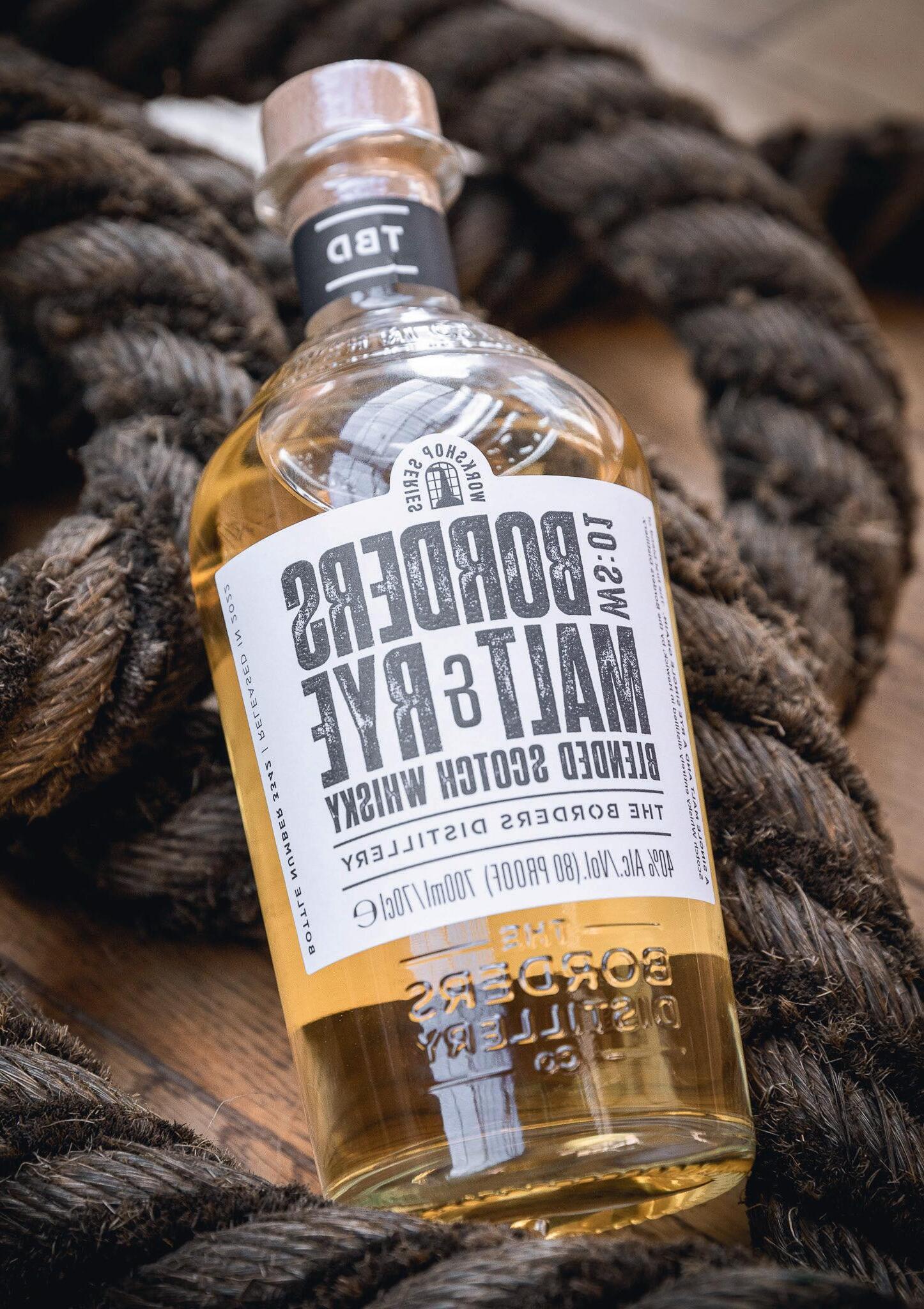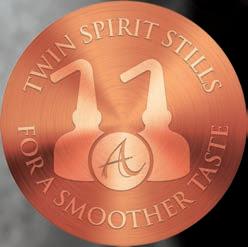ISSUE SIXTEEN | FREE












































ISSUE SIXTEEN | FREE


































































Pip Hills, the whisky revolutionary, is back...




































We have a real reverence for the legendary figures in the Scottish whisky industry, so it’s great to be able to include an interview with Pip Hills in this issue.
Even those readers who have never heard of Pip will probably be familiar with his work because Pip is the man who started the Scotch Malt Whisky Society. It started when he visited some pals in rural Aberdeenshire and marvelled at the quality of whisky his farmer friend was able to source from a local distillery, which turned out to be Glenfarclas.
Determined to avail himself of such a wonderful dram back at his home in Edinburgh, Pip started bringing casks of whisky back from his trips up north. Gathering some like-minded souls around him, they purchased four casks from

various distilleries. Then they set up a society, and through serendipity managed to buy the Vaults in Leith.
Fast forward forty years and what had started out as a bit of fun has now become arguably the biggest, and certainly the most successful, whisky club in the world, with almost 40,000 members and warehouses packed with the society’s casks.
It’s great to hear from the man who made this whisky world for us. Pip is, as he was forty years ago, a complete maverick – and we salute him for that.
EDITOR Richard Bath

TOM MORTON
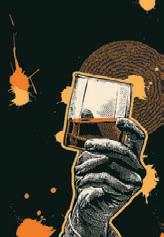
Tom’s book examines the relationship between booze and faith, the subject of his excellent and award-winning book Holy Waters
PETER RANSCOMBE
Peter looks at the explosion of zeroalcohol brewers in the capital, and interviews the legendary Edinburgh whisky maverick Pip Hills.







































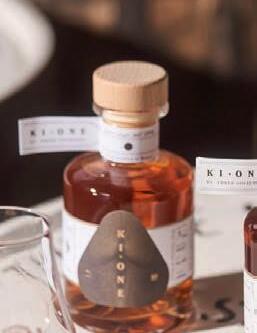

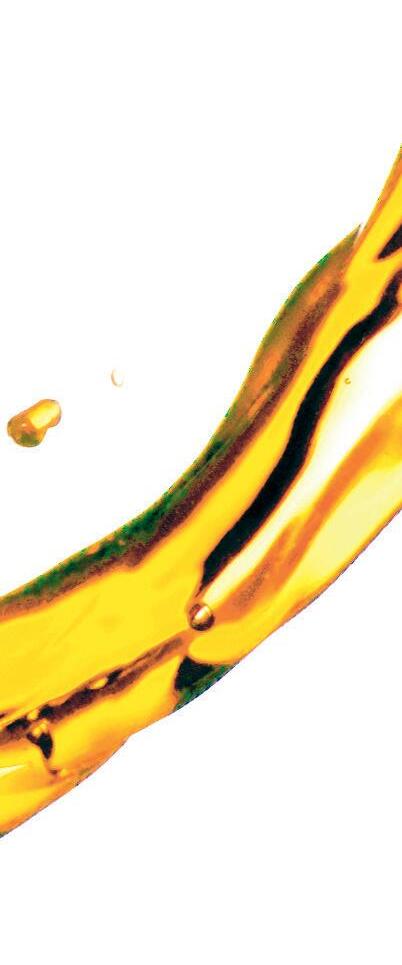



Cask & Still Magazine | 5

NEWS
Remember, you heard it here first...
08 BAR SNAPS
A decadent dram in The Watergate Hotel, Washington DC
10 ME & MY Actor Martin Compston enjoys a nip of Old Alba’s finest
THE RANT
King Charles causes a stir by choosing an English distillery for his Coronation whisky
DIVING INTO HOLY WATERS
Tom Morton explores the links between alcohol and religion


THE SPIRIT OF SPEYSIDE
John Boyle takes one for the team by attending the legendary event
ALL IN THE Hawksmoor Edinburgh serves up six glorious OVERSEAS
MIX cocktails dram
WHISKY
It’s Scotch to the Seoul as we head to South Korea for a
43 WHISKY BY NUMBERS
44 A BLUFFER’S GUIDE TO WHISKY FESTIVAL SEASON
46 THE CURIOUS ECONOMICS OF SINGLE MALT Mark Littler looks at the true value of new releases


52 WHISKY HERO
All aboard the dram tram, a unique tasting experience
57 CONNOISSEURS SELECTION
66 TREASURE ISLAND Do island gins have a monopoly on the market?
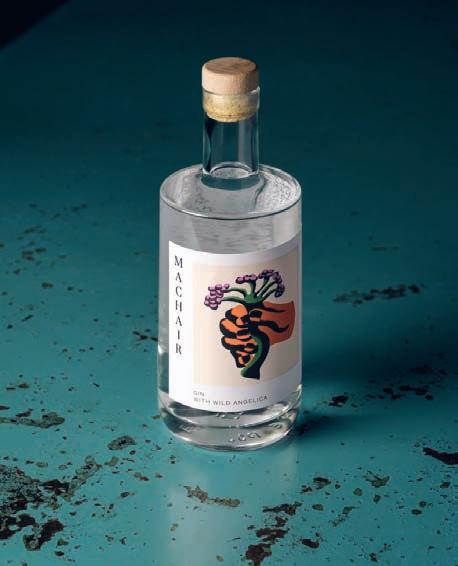
72 SPIRIT LEVEL

Liquorice and aniseed are the watchwords
74 AULD REEKIE IS GOING ALCOHOL FREE Is the capital drying out?
81 OVER A BARREL Beer and whisky have a lot in common
82 DRINKING
JUNE 2023 ISSUE SIXTEEN
DESIGN & EDITORIAL
Editor: Richard Bath
Design: Grant Dickie
Production: Andrew Balahura, Megan Amato
Chief Sub-Editor: Rosie Morton
@caskandstillmag 66 46
Staff Writer: Morag Bootland


Contributing Editor: Blair Bowman
Editorial Intern: Felix Petit
Contributors: Dr Brooke Magnanti, Mark Littler, Tom Morton, Federica Stefani, Geraldine Coates, Peter Ranscombe, Joe Dick, Johanne McInnis
Email: editor@caskandstill magazine.com







ADVERTISING
Head of Drinks Division: John Boyle jboyle@caskandstill magazine.com
Tel: 0131 551 7911



PUBLISHING
Publisher: Alister Bennett, Fettes Park, 496 Ferry Road, Edinburgh EH5 2DL. Tel: 0131 551 1000
Published by Wyvex Media Ltd.
While Cask & Still is prepared to consider unsolicited articles, transparencies and artwork, it only accepts such material on the strict understanding that it incurs no liability for its safe custody or return. The views and opinions expressed in this magazine do not necessarily reflect those of Wyvex Media Ltd.
Sir Rod Stewart has launched a new whisky. Distilled on the banks of Loch Lomond, Wolfie’s Whisky is a blended Scotch which pays tribute to the rockstar’s Scottish heritage, with subtle nods to Americana. The spirit was inspired by Rod’s early days with the Faces. Referencing the opening track from Rod’s 1991 album Vagabond Heart, the lyrics ‘Rhythm of My Heart’ are emblazoned on the base of the bottle. Wolfie’s will be available to buy online for submitted a final planning application for a new single malt whisky distillery at the former RAF Machrihanish airbase in Campbeltown. The Witchburn Distillery will produce two million litres of alcohol per year and be powered by green energy.

www.witchburndistillery.com




@caskandstillmag 6 | News feed

Scotland’s first fragrance house Kingdom Scotland has teamed up with The Macallan to create two whisky candles. Each 220g candle is inspired by the spirit with the wax infused with a blend of naturally-sourced notes to create a portrait of The Macallan. Nurtured by Nature has been inspired by The Macallan Estate, with a fresh, outdoor scent, while Spiritual Home embodies Easter Elchies House, with notes of spice, leather and fireside woods to portray a warm Scottish welcome. The Macallan x Kingdom Scotland candles are exclusively available at The Macallan distillery boutique and online for £75. www.themacallan.com

Glen Scotia, has teamed up with whisky writer Neil Ridley to create a record made with sounds from the distillery. The two-track vinyl was built using the banging of casks as drumbeats, mills running, soundbites of the distillery team’s conversations and microphones in casks of whisky. The sounds were then mixed with acoustic instruments and lyrics from singersongwriter Jenny Sturgeon.

46.3% ABV, RRP £425
This 30-year-old expression has aromas of Seville orange marmalade, creamy caramel, Manuka honey and hints of lemon drizzle cake.
NOBLE REBEL


WHISKY SMOKE SYMPHONY
Blended Malt, 46% ABV, RRP £40

Finished in Rioja wine casks, Smoke Symphony conveys notes of smoke, spice and dark berries.
Islay Blended Malt, 48%, ABV, RRP £65
Big Peat unveiled the limited edition which has been finished in red wine casks with notes of dark fruits.


63% ABV, RRP £1,200
Limited to just 96 bottles, Cask One was distilled in 2015 by the East London Liquor Company and is being sold exclusively by Harvey Nichols.

Whisky is the most profitable luxury investment, says research from the Knight Frank Luxury Investment Index, which says rare whisky bottles get a 373% return on investment. A £59.95 bottle of Balvenie 12-Year-Old Doublewood, for instance, sold for £223.61, a profit of £163. House of Bruar whisky expert Martin Homola (below) has since produced a guide to investing.
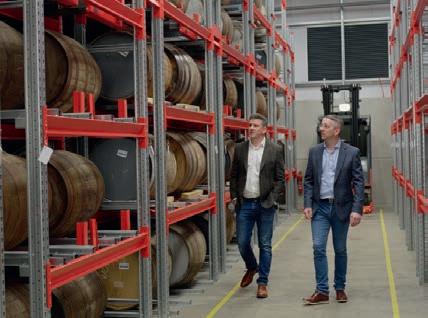



Still Spirit has made a £1million investment in a cask warehouse. With capacity of over 2,000 casks, the warehouse will allow the firm to offer casks to customers around the world. Those who purchase one will also have the chance to monitor its progress, including visiting the warehouse and sampling the whisky as it matures. www.casks.stillspirit.co.uk
Brown-Forman won awards at two coveted international spirits competitions with its single malts brands. Their portfolio, which includes The GlenDronach and Benriach, scooped 40 awards between them at both The International Wine and Spirits Competition and the San Francisco World Spirits Competition 2023. www.brown-forman.com
















The curvaceous walls of the whisky bar in the Watergate Hotel emit a soft amber glow which is created by the 2,500 illuminated bottles of whisky that line them. This may well be the perfect place to enjoy a Scotch, American or Japanese whisky, or indulge in a seasonal cocktail or two. thewatergatehotel.com/the-next-whisky-bar



Where did your whisky journey begin?
I had a funny relationship with whisky, and it was actually connected to seafood. My Granda’ Horsey (as we used to call him), God rest him, used to go and pick mussels but he had no teeth and he’d suck these things out. That put me off mussels for years. At the same time, he would drink whisky, and I’d see his wee face scrunch up, and I went, ‘No, not for me!’ There was this idea on the West Coast that it was an old man’s drink. I was in London with a great friend of mine, Greg McHugh, an actor, and he ordered a Laphroaig. I said, ‘Why on earth are you ordering a French whisky?’ That was my relationship with it. When did you start to enjoy whisky?
Just over the years, maybe getting mature and developing a palate. There’s a lovely whisky up at Craigellachie, Copper Dog, and I love bourbon and Maker’s Mark. That was probably the first one that I drank and realised, ‘Oh, I can drink this without a mixer’. Then on the job I had this amazing driver who would take me in a dram every morning. He said, ‘by the end of this, I’m going to find out what your tastes are.’ So I’d have a dram every night and he wouldn’t label the bottles. I ended up loving Glenrothes. Again, your palate changes, but that was definitely my favourite.
It’s something I find fascinating. I’ve worked a bit with Johnnie Walker, and the amount of people who think that it is American is amazing. We put ourselves down quite a lot in Scotland, and our whisky industry is something we should be screaming about from the rooftops. I talk a bit about this in my podcast ‘Restless Natives’. Whisky is our biggest export and as my palate has changed over the years I’ve grown to love it. I love discovering what I like and the science behind its creation.
Tell me about ‘The Firm’?
I invested in a whisky bar in LA with my friend Charles Lew, and he’s got these bars called ‘The Firm’. It’s amazing when you walk into this beautiful bar and you’re looking at the whiskies, and you realise, that’s ours. You’re in Hollywood, the glitziest part of the world, and they’re all flocking to this little place to drink our drink. Uisge beatha – we call it the water of life, that’s what it means to us. It is something I’m proud of. I’ve got to that age now where I do just enjoy a dram of an evening. I’m not tanning Budweisers or Smirnoff Ices! I just sit and have a wee dram.
How do you take your whisky?
I like to drink it pure. We’re spending all this
Actor Martin Compston is partial to Old Alba’s finest water of life, but that hasn’t always been the case...
Interview by Rosie Morton
‘Our whisky industry is something we should be screaming about’
money on Jack Daniels mixers, but we should be trying to keep that more local I believe. It’s something I’m very interested in – the science of it all. I’ve been very lucky to get behind the scenes at Macallan and it’s just fascinating. There are a couple of whiskies that I work with... Because, of course, what the world needs is an actor bringing out a drink.
Favourite dram at the moment?
Right now, it would probably be Glenrothes. It chops and changes. That’s something else that I think we need to get away from – the idea that ‘blend’ is a dirty word when a lot of blends are actually the best whiskies combined! We’ve got it into our heads that if it’s not a malt then it’s no good. But these master blenders are incredible. I think it was a sherry Johnnie Walker one I had not so long ago, and it was gorgeous. So, it would be between the sherry Johnnie Walker and the Glenrothes. I’m currently working on my own whiskies too…

Favourite whisky bar?
The Craigellachie Hotel. The whisky bar there is phenomenal and you’re literally within touching distance of Macallan. I couldn’t recommend it enough. The location is stunning, the food is stunning, it’s a beautiful wee town, and the whisky collection in there is insane.
Best outdoor location for a dram?
Ideally somewhere remote, but sitting on the top of Johnnie Walker Princes Street looking at Edinburgh Castle is pretty spectacular. There’s also a little restaurant on Loch Fyne – Inver Restaurant & Rooms. I would love to go back there. If you could have a dram outdoors there, that would be pretty amazing.
If you could share a dram with anyone, dead or alive, who would it be?
Robin Williams. He spoke so passionately about Scotland. It would change all the time, but Robin I think would be pretty spectacular.


Pip Hills walked away from the Scotch Malt Whisky Society some 12 years after founding the whisky club, but now he’s come out of retirement to toast its 40th anniversary
Written by Peter RanscombeLast year, Hollywood legend Tom Cruise did something very clever. He brought back one of his most famous characters – Captain Pete Mitchell, call sign: ‘Maverick’ – after more than a quarter of a century to star in the sequel to Top Gun and inject a sense of fun once more into its big-screen fighter pilot antics.
The Scotch Malt Whisky Society (SMWS) has pulled off a similar trick. To mark its 40th anniversary, the whisky club has called on the services of its founder, creative genius Pip Hills, to bring the fun back to its single cask drams.
Hills has been at the centre of the society’s celebrations this year, from posing for photos outside its Leith HQ alongside whisky fans gathered from 13 countries, all the way through to the release of a 12-year-old small batch single malt named ‘Maverick’ in his honour. But what tempted the 82-year-old out of retirement?
‘The people,’ he replies simply, as he nurses a glass of Scotch while nestled in a corner of the bar at The Vaults, the converted whisky warehouse that he bought for the society back in its earliest days. ‘One of the things that sold me about coming back here was the quality of the staff, from the managing director to the bar staff.’
A sense of unfinished business also hangs in the air. Hills left the society he founded in 1995 after the early days of its international expansion caused jitters for its bank and its board, prompting a shift to a more ‘commercial’ model.
‘The society had lost its sense of fun,’ Hills muses. Nine years later, the SMWS was bought by whisky distiller Glenmorangie, around the same time that GlenMo itself fell into the arms of French luxury goods behemoth Louis Vuitton Moët Hennessy (LVMH). When the SMWS came up for sale again in 2015, it was bought by a consortium of investors under the banner of Edinburgh-based private equity outfit Inverleith. Hills praises those investors for saving the society from ‘asset strippers’ who wanted to buy it and close it down, so they could sell off its rich stock of casks and pocket the profit.
Those saviours include former Glenmorangie managing director
Paul Skipworth and ex-banker
 Ben Thomson, managing partner and chairman
Ben Thomson, managing partner and chairman

‘The SMWS has called upon the services of Pip to bring the fun back’Left: The man, the myth, the legend. Right: Portrait of the artist as a young man – Pip Hills in the 1960s.
respectively of Inverleith. Last year, they continued their drinks investments by buying St Andrews-based Eden Mill brewery and distillery.
In 2021, Inverleith floated the SMWS on the London stock market under its Artisanal Spirits Company banner. Selling shares has helped to fuel the society’s international expansion, with membership now reaching 37,000 people.
‘They’ve been very clever by forming partnerships with bars around the world,’ says Hills. ‘The society would never have had enough money to open that many members’ rooms.’
As well as the members’ rooms at The Vaults in Leith, the society also has sites on Edinburgh’s Queen Street and in Glasgow and London. Only members and their guests can buy its whiskies from its partner bars, giving the society a global reach.
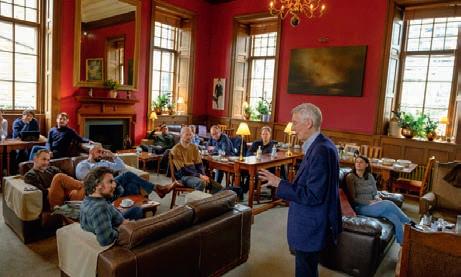
It’s all a world away from the SMWS’s origins. Hills was introduced to single cask malt whisky while visiting a friend, Duncan McArdle, on the Howe of Alford in Aberdeenshire.
A neighbouring farmer, Stan Barnett, drove across the Cabrach each year to Speyside to buy a quarter cask of whisky from Glenfarclas distillery. He gave some in a glass Irn Bru bottle to McArdle, who shared it with his guest, and Hills was immediately smitten, contrasting it with the bland blended whiskies of the day, which were diluted and filtered.
‘I loved it, and I was astonished by two things,’ he remembers. ‘Firstly, it was nicer than any whisky I’d ever tasted; and secondly, it didn’t give me a horrible hangover.’
Returning home to Edinburgh, Hills put together a syndicate with a dozen friends to buy a cask. He’d learned the networking skills needed to assemble his buyers thanks to his work with the Labour Party in the 1960s – which included defeating plans to run a six-lane motorway through the picturesque centre of Scotland’s capital, where a decade earlier he’d become the first person to free climb up the Scott Monument – and his day job as a tax accountant.
Barnett introduced him to the Grant family, who owned Glenfarclas, and Hills ventured north with a cheque for £2,500 and loaded the
cask into the boot of his vintage 1937 Lagonda. Word spread and soon there was enough demand for two casks, with Hills despatched back to Glenfarclas, this time with a trailer attached to his sportscar.
Seeing the demand, Hills

pondered how to turn the syndicate into a wider society. A fellow climber, John Ferguson, introduced him to Russell Sharp, the chief chemist at distilling giant Chivas Brothers and the father of Innis & Gunn beer brand founders Dougal and Neil.
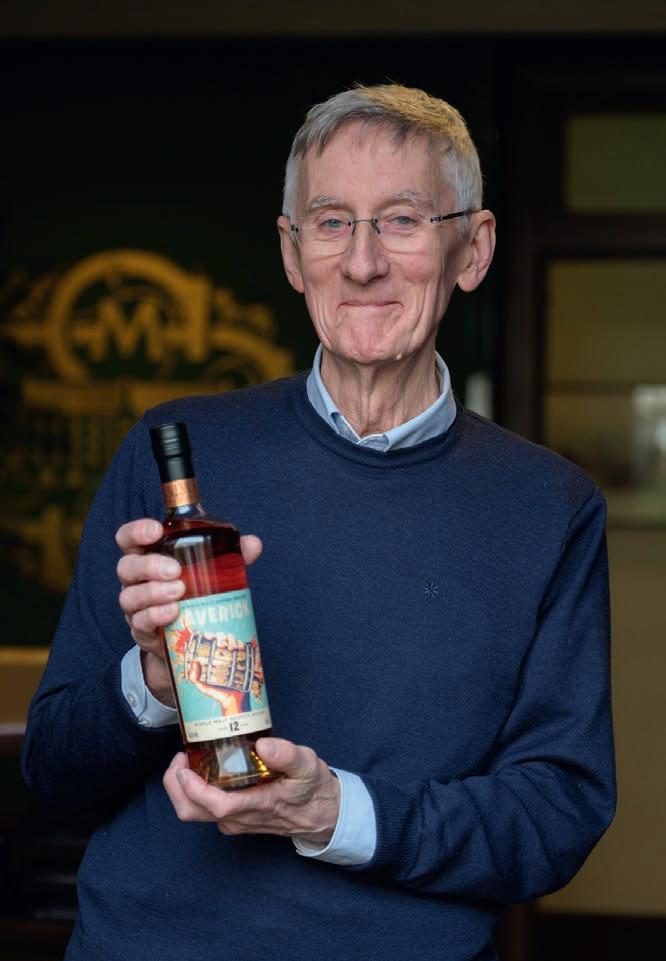
Over drinks at the Horseshoe Bar in Glasgow, Sharp signed up as a consultant, and the SMWS was incorporated in May 1983. Its first four casks came from Glenfarclas, Glenlivet, Bowmore and Highland Park, with the society’s famous bottle numbering system developed so as not to infringe the distilleries’ trademarks.
Those early days saw Hills eschew advertising in favour of free publicity. Inviting journalist Conrad Wilson and his Scotsman wine tasting team to sample the first four casks yielded the desired coverage.
‘We were making it up as we went along,’ smiles Hills. ‘We treated whisky tasting like wine tasting – describing the aromas and flavours – and we served the whisky in glasses I designed.’
Wilson and his colleagues gave the Highland Park 99 points from 100 –compared with their highest score for a wine of 83 for Bordeaux’s legendary Château Lafitte – and word began to spread throughout Scotland. A review by wine critic Jancis Robinson in The Sunday Times brought the society to a UK audience, while articles by Paul
Levy in the Wall Street Journal and Pulitzer-Prize winner David Mamet in Playboy launched its reputation internationally.
Looking for premises, Hills knocked on the door of wine merchant J&G Thomson’s bonded warehouse in Leith, a building he’d long admired. The manager told him the company had recently been taken over and was moving out.
‘I felt the hairs rise on the back of my neck,’ Hills recalls. Together with three friends, he put together the £50,000 needed to buy the society’s historic home.
Forty years later, sitting in the bar at The Vaults in Leith, Hills sips his Scotch – a dram from cask number 23.77, called ‘You’re a wonderful one’. It’s a 29-year-old Islay that he describes as ‘pretty much as good as it gets’ before he reels off a long list of exciting ideas for what the society can do next, his passion undiminished by the passage of time.
The maverick is back where he belongs – in the hot seat.
‘The maverick is back where he belongs – in the hot seat’
King Charles III’s decision to release a commemorative Coronation whisky from an English distillery grinds our columnist’s gears. It’s called Scotch for a reason...
Written by Richard BathThe Royal Family famously love a tipple. Or, more precisely, they adore a dram. The list of members of The Firm who are partial to a slug of the water of life is long, distinguished and stretches all the way back into antiquity. Well, I exaggerate a little but not much because the association of the royals with whisky stretches back to at least the 1700s according to reports that the dissolute and entertainingly drunken King George IV had a taste for illicit Glenlivet, which he arranged to be shipped to London while still a teenage princeling.
Nor was he alone. The famously austere and priggish Prime Minister William Gladstone once reported that he had witnessed Queen Victoria surreptitiously
adding whisky to her claret, while George V liked Johnnie Walker so much he gave it a Royal Warrant. More recently the late Duke of Edinburgh made no secret of his fondness for a dram of Glenfiddich.
So it is no surprise that King Charles, who went to school in Scotland and spent long summers in the Highlands within spitting distance of the Royal Lochnagar Distillery, developed an appetite for the national drink, which he generally drinks neat.
It’s both a private and a public passion. In private, whether out with the Beaufort Hunt, shooting grouse at Balmoral or whizzing down the slopes at Klosters, he is never without his hip flask containing Laphroaig and occasionally Bruichladdich.
‘The famously priggish Prime Minister William Gladstone reported that he had witnessed Queen Victoria surreptitiously adding whisky to her claret’
In his public life, he attended the Keepers of the Quaich dinner at Blair Atholl in 1996 and has visited countless distilleries, from Thurso to Islay and all points in between. He has also officially opened several distilleries, including the reopening of Benromach Distillery in 1998, Ballindalloch Distillery in 2015 and the reopening of Bladnoch Distillery in 2019.

But he has a special relationship with Laphroaig, which he likes so much that he awarded the Islay distillery a Royal Warrant, the only time he has honoured a whisky distillery in this fashion. When, in 1994, he visited the distillery (giving the tabloids a field day by crashing his plane as he landed), he left with two casks, which he donated to two Scottish charities, personally signing 15 of the 270 bottles with ‘Charles 1999’. Laphroaig also does a special bottling for Highgrove, the King is a member of the Laphroaig appreciation society and he has given a bottle of Laphroaig as a gift on trips abroad on several occasions, such as to President Kucan of Slovenia.
So we’ve established that King Charles III likes his whisky. And the whisky world loves him, hence the slew of releases around his Coronation on 6 May. Royal Lochnagar Distillery released a Balmoral Coronation Release costing £360; Hunter
Laing released a Laphroaig with a Coronation label at £1,099.95; Duncan Taylor’s special Coronation triptych came in at £3,900; Royal Salute’s limited-edition expression to
VISIT THE WORLD’S OLDEST PRIVATELY OWNED SCOTCH WHISKY DISTILLERY

















TOURS, TASTINGS, GIFT SHOP & CAFE

Bladnoch, Galloway DG8 9AB



Open Tuesday to Saturday
SPIRIT OF THE LOWLANDS




Curly Coo Bar
Curly Coo Bar
Stirling’s only Whisky Bar
Curly Coo Bar


Stirling’s only Whisky Bar
Stirling’s only Whisky Bar
Stirling’s only Whisky Bar








Award Winning Whisky Bar. Over 220 Malt Whiskies.
Award Winning Whisky Bar. Over 300 Malt Whiskies.



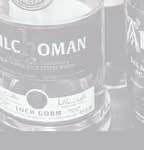



Cosy traditional bar.
Cosy traditional bar.
51 Barnton Street Stirling FK8 1HH 01786 447 191
51 Barnton Street Stirling FK8 1HH 01786 447 191 curlycoo@ymail.com






www.curlycoobar.com
www.curlycoobar.com


commemorate the Coronation cost £20,000 per bottle; and each of the 281 bottles of Gordon & Macphail’s commemoration 74-year-old Glen Grant cost £25,000.

So far, so expected. But what about King Charles? The unspoken expectation was that he would do something with either Lochnagar (which is too floral for his personal tastes) or the favourite, Laphroaig, which has long been on sale at Highgrove. Instead, we got something that was as different as it was unexpected: we got an English whisky.
This magazine has rightly been an evangelist for world
with a finish characterised as sweet and rich with a touch of clove spice.
whisky, and in each issue we bring news of the wider world of whisky to our readers. Just this month we have a huge feature on Korean whisky by my colleague Blair Bowman, and we also have a feature on the whisky scene in Brazil.
We are an international bunch. But when push comes to shove, whisky was invented north of the Tweed, and when it comes to Scotland’s national drink King Charles should, first and foremost, be Monarch of the Glens. Instead we got a press release announcing that King Charles’ Coronation dram would be made by the Cotswolds Distillery. It would, we were told, be made with barley from the King’s estate at Highgrove, and would be sold at £295.
Unsurprisingly, the whisky sold out immediately. Just 340 bottles of Highgrove Coronation Single Malt Whisky were made, each emblazoned with a commemorative Coronation label, and with all of the profits going to The Princes Foundation (there is a separate Foundation for Scotland, based in Edinburgh). On the day of the Coronation the Cotswolds Distillery released a batch of 175 bottles of Coronation Cask single malt under their own banner.
Reports suggest it was actually rather good. Produced in re-charred ex-red wine casks, it was rich and fruity, with its tasting notes mentioning baked pears, nutmeg and treacle on the nose, toasted oak, cacao and candied orange on the palette, and
But this is not about the spirit, but where it was produced. When the choice of distillery was queried, the reason seems to have been that the Cotswolds Distillery were already creating a whisky made using the heritage, organic Plumage Archer barley which the then Prince Charles had insisted was grown on the Highgrove Estate. If you factor in the King’s determination to use organic heritage brands, the decision to partner with the Cotswold Distillery rather than a Scottish distillery makes sense – until, of course, someone reminds you that Highgrove already has its own-label single malt whisky made from Scottish organic malted barley grown in Inverness-shire.
Often to be seen striding around rural Aberdeenshire dressed in his kilt, King Charles has shown himself to be both proud of his Scottish heritage and aware of national sensitivities north of the border, particularly since devolution. So this is a particularly curious own goal.
‘We’re internationalists, but whisky was invented north of the Tweed’
Tom Morton’s book Holy Waters: Searching for the Sacred in a Glass is a worldwide exploration of the links between religion and alcohol. Here, he explores the origins of his own personal relationship with faith and drinking. And it all began in Ayrshire...
Written by Tom MortonThe small coastal town of Troon in Ayrshire may be most famous for regularly hosting The Open Golf Championship, but it has other attributes: one of the best fish and chip shops on the planet, the Wee Hurrie; two vast, windswept and generally clean beaches; and Marr College, the local secondary school with its distinctive green copper dome.
And a square building in West Portland Street called, these days, Seagate Evangelical Church. Or as I knew it, growing up obsessed with golf, rock ’n roll and religion, Bethany Hall, an outpost of the group variously known as Plymouth, Open or Christian Brethren. And it was where I first encountered alcohol.
The Brethren in those days were not in favour of social drinking. Teetotalism was the name of that particular godly game – except on Sundays at the weekly communion service.
‘The silver,’ said my dad, ‘reacts with the alcohol and actually kills germs. So despite the fact that everyone





is drinking from a common cup, infection cannot spread.’
I believed him. But then, the wonder and mystery of the Sunday morning communion service at Bethany Gospel Hall was overwhelming for a wee boy. How could you not believe? There was the glint and glitter of the two big silver communion cups, a bottle of Old Tawny fortified wine in each.
I knew it was Old Tawny as with my pal Stewart I had raided the Gospel Hall bins one bored summer weekday and found the brown bottles lurking at the bottom. Empty or we’d have had a swallow. What I have never been able to establish is whether this was
‘The silver reacts with the alcohol to kill the germs, said my dad’
‘proper’ old tawny port, or a cheap fortified wine masquerading as such. I have drunk all sorts of fortified wines in my post-Brethren years, including a Madeira originally bottled in the 18th century and a port which cost £55 per glass in the Ubiquitous Chip Restaurant in Glasgow (Scottish Television were paying). Communion on an Ayrshire Sabbath was no
place for connoisseurship. It was strong. It was heady. It was Old Tawny and it was the blood of Christ. Symbolically.


A loaf of unsliced bread sat on a silver platter between the communion chalices, draped with a starched linen napkin. And the smell was the first thing that hit you when you entered the building. The warm, domestic embrace of











the bread; the pungent, heady reek of the wine. All I wanted to do was eat and drink. At that age I was always hungry. And thirsty. And that raisiny whiff of fermentation was somehow thrilling. It spoke of transformation. Adulthood. The future.




That wine, as the massive cup moved along by inhalation. There was great amusement congregation
That wine, as the massive cup moved along the pews, could make you slightly drunk just by inhalation. There was great amusement in watching certain elderly members of the congregation swilling back a couple of massive swallows, their cheeks flushing rosy pink in holy ecstasy.









You didn’t get to partake of communion in the Brethren unless you’d been baptised (full immersion –minimum age: 16) and then you had to confess your belief in front of ‘the meeting’, or its representatives on earth, ‘the oversight’ – a selection of male elders. Eventually, amid a welter of adolescent doubt and desperation to belong, I was submerged and welcomed into the fellowship, and I got to taste Old Tawny myself. It was acrid and sweet at the same time, sour and sugary and thick, like treacle. As motes of dust danced in the sunlight streaming through the windows, I felt my head swimming with pride. I belonged. And if you sneaked a second sip, it made you feel... good. It was almost miraculous.
























It was almost miraculous. happen at in Northern Ireland, uisge beatha, thought that 13th





MIRACLES happen at Bushmills Distillery in Northern Ireland, as you might expect when the water of St Columb’s Rill is being transformed into uisge beatha, the water of life. It’s thought that whiskey has been made on this site since the 13th century. Long, long after Columcille had become St Columba and departed for first Kintyre and then Iona, on his mission to spread Christianity to those pagan native
 Right: Tom in his happy place.
Right: Tom in his happy place.
‘Edlerly members of the congregation swilled back massive swallows’
Scots. And four decades or so after my Bethany Hall inhalations I found myself miraculously saved from injury in the distillery car park when the motorcycle I was trying to board toppled on top of me. I should probably have distributed those bottles more evenly in the panniers. I can tell you that later that evening, safely settled in a hotel near the Giant’s Causeway, I sipped a rare Bushmills Causeway collection Pomerol Cask and caught just a whiff of Bethany Hall morning meeting on the nose. I said a little prayer of thanks for deliverance to St Columba. Unfortunately, he couldn’t repair the bike.
ALCOHOL and Christianity have always walked hand in hand. And even today, at the very top of the Roman Catholic Church, there is evidently the taste for a dram. At the Vatican in 2019, Pope Francis was presented with a bottle of Oban single malt whisky by a group of Scottish



student priests. He was, it’s fair to say, delighted, and he was caught on video holding the bottle up to the light and telling the young men ‘Questa e la vera acqua santa!’. ‘This is the REAL holy water!’















Ripples of unease spread across Roman Catholicism. Though it was recognised that the Holy Father had his tongue firmly in his cheek, he had form with whisky. The previous year, a gift of whisky from Scottish priest Father Jim Walls had provoked a reference to holy water, and the same year Father Jim Sichko presented him with a bottle of 23-year-old Pappy Van Winkle Bourbon. ‘This,’ said Pope Francis knowledgeably, ‘is really good bourbon.’ What he thinks of Bushmills – or Jameson’s – is not recorded.


Holy Water. The water of life. Uisge beatha. Of course that water-of-life stuff sounds awfully similar to the Latin aqua vitae, as in Aquavit, or eau de vie, as in Cognac, Armagnac or Calvados. In every culture, in every country, distilled alcohol has been seen as a lifeaffirming, life-giving liquid. Magical. An elixir, in fact. Yes, in large quantities, it will kill you, but its origin was as a medicine. And to go back to Gaelic (Scots) that’s why it’s best to moderate your intake by asking for ‘te bheag’ (chay-vaik). A wee one. You can have several wee ones. Lots of wee ones. Sufficient wee ones to sink the Titanic. But stick to just a few wee ones and you’ll be all right. Probably.













Alcohol, then. Distilled spirit. Did the Irish monks discover how to produce it? Some would say it’s impossible to believe that alcohol







































could first have been distilled anywhere else. But no. Distilled alcohol for drinking is a Middle Eastern discovery.


The basics of the technology would have been picked up by Irish monks, known for their travels in the Middle East, and brought back home. By the 800s, the legend that was Persian alchemist Abu Musa Jabir ibn Hayyan was perfecting what we would recognise today as the alembic still.
My book Holy Waters: Searching for the Sacred in a Glass is about ‘discerning the spirits’, as the Bible instructs on many occasions, perhaps most notably in 1 John 4, verse one: ‘Beloved, believe not every spirit, but try the spirits whether they are of God: because many false prophets are gone out into the world.’
And not just the God of the New or Old Testaments, but the gods of Shinto, the God of Islam, the many gods of Hinduism, pagan deities,




























viking divinities (very big drinkers) and perhaps, first and foremost, the embracing of humanity’s loving and divine agricultural interactions with the planet.

Put together clean water, carefullygrown crops, yeast and fire and you can produce real magic.
The real miracles, be they wine, whisk(e)y, beer, sake, aquavit or rum. If you have the knowledge. If you have the faith. It is a matter of the spirit. For alcohol and faith have always walked hand in hand. Believe me.
Meanwhile, in Troon these days, just round the corner from Seagate, there is a flourishing specialist whisky shop called The Jar, offering over 300 single malts to the discerning toper.
I note that they have a bottle of the Glenfarclas Family Cask bottling, distilled in 1957. A mere £14,800. Which reminds me of a memorable trip to Glenfarclas on Speyside when the Family Casks range was being launched.
Would I like to try a 1955 (year of my birth)? I thought, on balance, I might.
And there was another miracle.

Holy Waters: Searching for the Sacred in a Glass is published by Watkins and is available worldwide




The Spirit of Speyside team, fresh from delivering a record-breaking Whisky Festival in April are bringing another fantastic event to the sampling table with Distilled 2023.
Now in its 6th year, Spirit of Speyside: Distilled sees some of the world’s best whisky distillers under one roof for a weekend that will delight whisky noses with a taste for the Speyside region.
Being home to more than half of all Scotland’s distilleries, whisky is well represented. However, as the region’s long expertise in distilling continues to spill outwards, the event also plays host to many innovative new gin and vodka distillers as well as superior craft breweries.
A unique event where visitors can enjoy the true taste of a modern Speyside, Distilled sees global brands participate alongside small, craft producers who are just starting out and perhaps ready to become the region’s next worldwide success.



Join the festivities on 1-2 September at Elgin Town Hall and find a new favourite as you sample
your way around the hall, meeting and learning from the master distillers, sipping a cocktail, nosing the best local drams, and tasting the beers and gins.
From some of the most famous whisky brands, to innovative new gin and vodka producers, local craft beers, seafood specialists and artisan makers – Distilled celebrates the ever-evolving culture of the Speyside food and drink scene.



Spirit of Speyside: Distilled 2023

Friday 1 – Saturday 2 September 2023

Elgin Town Hall
www.spiritofspeyside.com/distilled
1 - 2 September 23
Elgin Town Hall #distilled23
1 region 2 days The







This year I had the much-envied task of attending the full five days of the world renowned Spirit of Speyside Whisky Festival. I was attending in the official capacity of Scottish Field’s Head of Drinks as well as judging the festival’s ‘Best New Event’ category. As a whisky lover, collector and selfproclaimed connoisseur it was important to

remember that this week was a marathon not a sprint. If I was to give each event a fair chance and make it through this dazzling gambit of aromatic whisky wonders I was going to have to pace myself.


The Spirit of Speyside Whisky Festival was first held in 1999 and is the annual celebration of Scotland’s water of life. It is staged in the





heart of Scotland’s most famous whisky producing region and is one of the largest events of its kind in the world. The events take place in distilleries, village halls, private tasting rooms, disused railway stations, historic castles and more evocative settings perfectly suited to showcasing whisky.


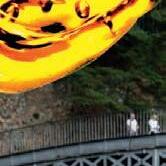













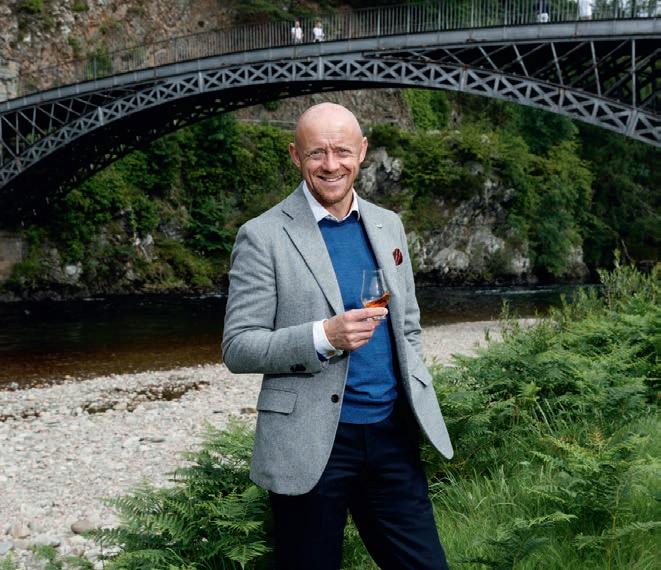



On 26 April the festivities kicked off with a delicious foray into fine dining at the hibernating Dhallas Dhu Distillery near Forres. Festival chairman George McNeil welcomed over 300 of us to the event and the air of anticipation was palpable. The mob were baying for whisky and keen to be let loose on the 600 whisky-themed events that were to take place over the next five days.

As the event wound down in the wee hours I trickled back to the splendidly comfortable and authentic refurbished Craigellachie Hotel in Aberlour. I was delighted to be put up in this malted Mecca that has a cellar that houses over 1,000 different whiskies. The hotel’s famous Quaich Bar proved a more than suitable spot to bed down and enjoy several thoroughly convivial evenings over the week.
I was up early on Thursday morning and rearing to get started on my whisky odyssey. First on the jammed itinerary was an in-depth tour of the Tamdhu Distillery. Tamdhu is one of my all-time favourites. They have specialised in doing only sherry oak cask maturation from start to finish, so it

Dry nutty sherry, milk chocolate, rum raisin, citrus and plum. A deep copper hue and un-chill filtered delight awaits the Speyside single malt sherry wood connoisseur. Worth the 18 years wait



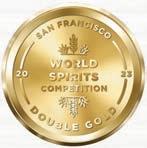

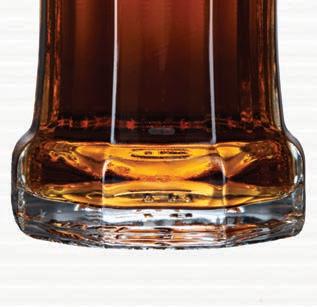














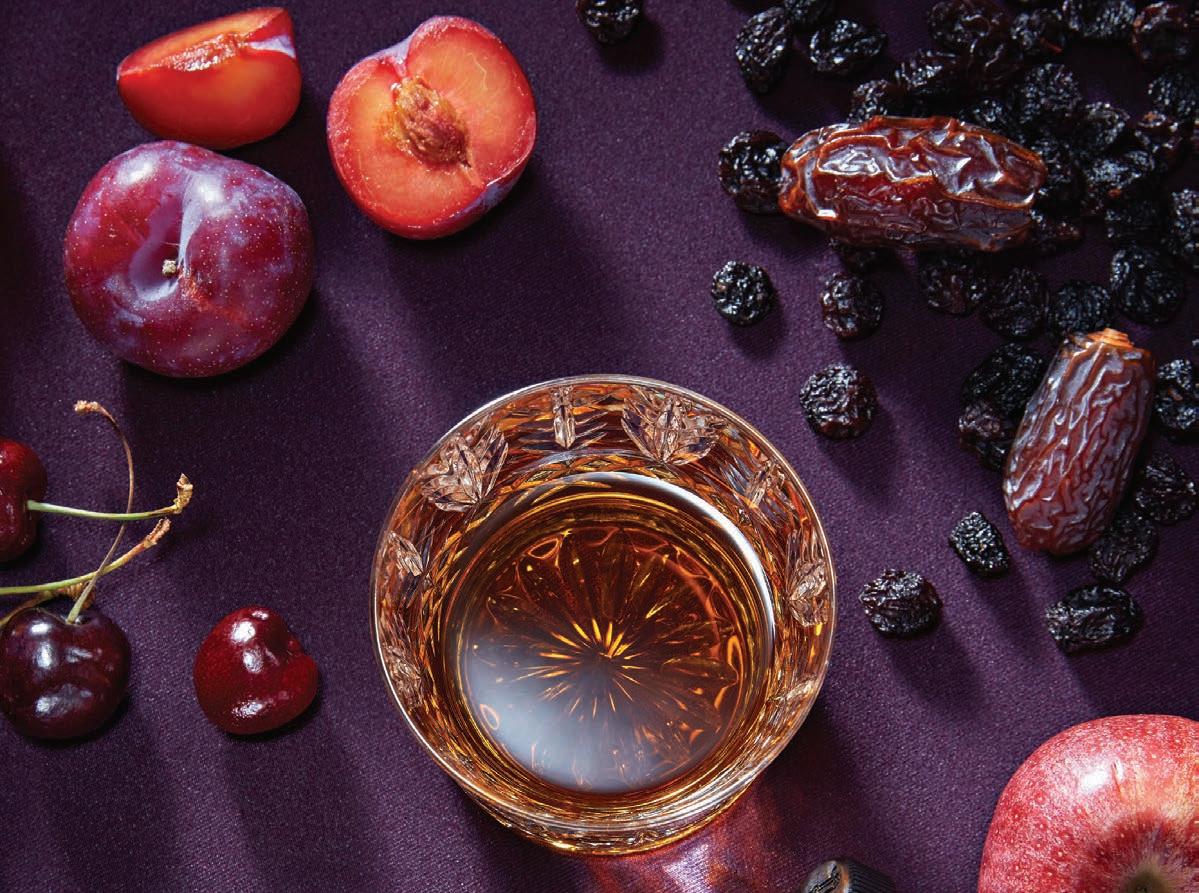
is no wonder that they have nearly perfected it. In my capacity as a judge of ‘Best New Event’ (a responsibility that I discharged with the utmost diligence) I was scoring each of them on a criteria that included social media promotion before the festival, event concept, arrival welcome, event atmosphere, customer service, knowledge from the guide or host, food offering, explanation of the history of distillery or region, taste of liquid and overall setting.


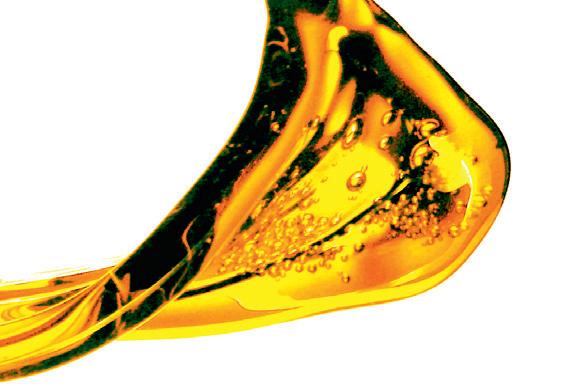



Tamdhu gave us a six-hour tour of the distillery conducted by esteemed distillery manager Sandy McIntyre. Sandy chaperoned around 30 of us through the various Tamdhu offerings with exceptional knowledge, offering great detail if requested, his passion for his job evident throughout. Sandy opened up a few casks and we sampled them thirstily – and
they were delicious. We had a break for a home cooked lunch provided by one of the wives of a distillery employee which set us up beautifully to get stuck into blending our own Tamdhu whisky in the afternoon. It was a roaring start to the week. If I had one criticism it would be that a whisky cocktail would not have gone wanting at the start and for our walk round the distillery.
Once again I rose promptly on the Friday to get stuck into the meat of the festival proper. My first appointment was with Ann Miller aka ‘The Dram Queen’. Ann is an independent whisky expert with over 30 years in the industry. She has created an atmospheric tasting room on her family farm deep in Speyside, replete with log fire and comfortable chairs. She walked us through the history of Speyside using the 19th-century railway line as a hand rail to take us across the map from producer to producer. She expounded on the whisky industry’s illicit past and told fabulous tales of Cardhu’s original owner and her secret signal to let other distillery owners know that the law was on its way. The event was relatively intimate with just ten guests and Anne’s choice of six whiskies for us to try was tip top.
Having truly enjoyed the ‘Dram Queen’s’ offering I moved on to the pleasingly picturesque granite buildings of Aberlour for the afternoon slot. This was a particularly exciting prospect as the distillery production








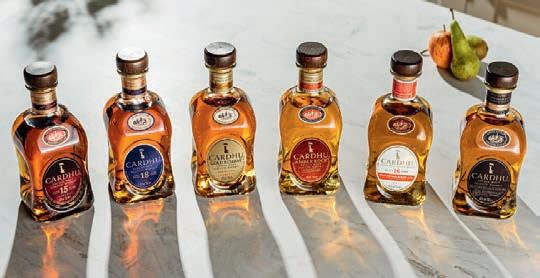




‘Sandy opened up a few casks and we sampled them thirstily’


























































areas have been closed to visitors for some time due to a large-scale renovation project. Tom, our tour guide, was knowledgable and engaging. We started the event in the old distillery manager’s office, a room steeped with distilling history where the spirit seems to have impregnated the very walls that surrounded us. Immediately, several cocktails were thrust into our mitts which we enjoyed over a general chat. Next up were two core range malts pleasingly paired with salty cheeses and bitter olives to slice through the rich chocolatey tones of the whisky. In this fantasy world of all things whisky we were given scoops of smooth whisky ice cream and another refreshing whisky cocktail to finish. It was one of my favourite
experiences to date and one that I would readily recommend to whisky aficionados and first-time triers alike.





























































Rising on Saturday morning after yet another jolly evening, this time in The Highlander Inn just across from the hotel, the week’s events were beginning to weigh slightly heavier, yet this was no time to languish with so many more sensational whisky experiences to be had.
beginning to weigh slightly heavier, so many more sensational whisky
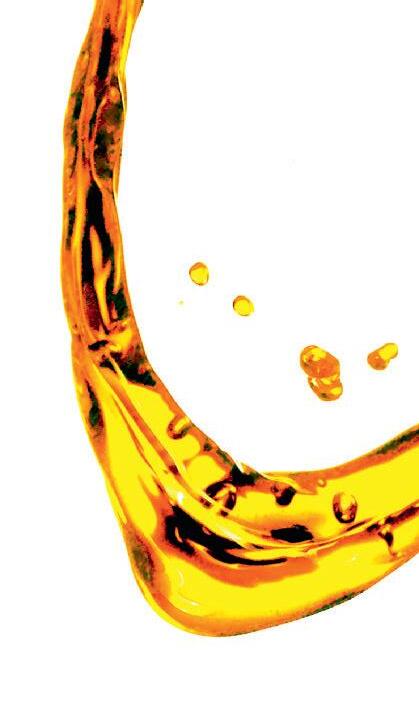
bottlers Murray McDavid at the Coleburn Distillery around five miles south of Elgin to tick an experience

list… We were there to build our own
I was off to join independent Coleburn Distillery around five miles casks, trying our hand at the ancient profession of coopering. This complex and traditional craft
This complex and traditional craft was revealed to us by master cooper
totally immersed in his profession
iron rings down without letting arms than a squid and suckers
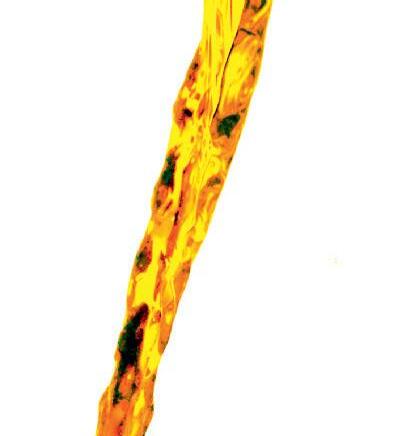


Jason Taylor who, like so many in and worthy of the overused term ‘artisan’. To line up the various iron rings down without letting arms than a squid and suckers
It took me almost 40 minutes


done in seven. My respect for these craftsmen skyrocketed.
Once casks had been created away to another bottler, Gordon


Once casks had been created away to another bottler, Gordon and Macphail’s new shop in Elgin itself. The event was styled as the G&M Sherry Bodega and we explored a flight of five sherry cask matured whiskies in their tasting room at the back of the very well stocked shop.
We were led through the drams by Jack Dickinson who spoke eloquently about the relationship G&M had cultivated with Spanish sherry
producers and why it was so important to the final product.



















Jack was so passionate that it was difficult not to feel the same way. The demographic of the small tasting group ranged across Europe with several Scots. There was plenty of laughter and an easy dynamic.
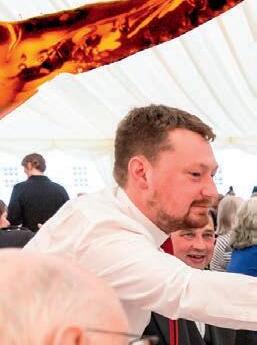
We tried a whisky from 1957, for me the oldest of the week. Yet another memorable event and, with just one more to come, the week was suddenly drawing to a close.
Sunday morning blearily swam into view. Despite my weariness I was still very excited to visit The Speyburn Distillery just outside of Rothes. Speyburn is a real jewel in a whisky fans crown. It hasn’t been open to the public






since 1967 but the management secured special permission to throw open its doors to visitors for The Spirit of Speyside Whisky Festival. This is an unusual distillery. Established by John Hopkins in 1897 the Granty Burn – its water source – runs down a steep, wooded valley. Rather than inflict an unsympathetic building on the landscape Hopkins’ architect Charles Doig built something unique, a three-tiered pagoda ventilator for malting grain
with limited space. Not only do very few distilleries still malt their own grain but no one does it quite like this.
As a true whisky super-fan, this architectural peculiarity – combined with the nectar it produces – won it for me.








The history, the setting and the feel of the place surpassed The Speyburn Distillery Event


the other experiences of the week, so after much deliberation I crowned





 Above: Pass the Glenfarclas.
Right: Speyburn Distillery.
Above: Pass the Glenfarclas.
Right: Speyburn Distillery.
At the foot of Ben Rinnes, in the heart of Speyside, Glenfarclas Distillery has been owned and run by the Grant family since 1865. Glenfarclas Visitor Centre is this year celebrating its 50th anniversary - back in 1973, George Grant (chairman at the time, and father of John Grant, the chairman today) made the highly unusual choice to be one of the first distilleries to open a dedicated visitor centre. As an independent distillery we take pride in creating high quality Highland Single Malt Whiskies in the traditional Speyside style. We are proud to be one of the few remaining familyowned and independent distilleries and hope that everyone visiting leaves with the feeling that they are now part of the Glenfarclas family.
Guided visits provide the opportunity to dive into the rich and unique history of Glenfarclas before getting up close with the different stages of production with a visit to our iconic directfired stills. Other highlights include the chance to step inside one of our traditional dunnage warehouses to see where our whiskies are matured and the opportunity to enjoy a dram in the Ship’s Room, which has its own history and story to tell. We offer Classic, Connoisseurs and Decades tours which are designed to cater to every level of whisky enthusiast.
To see our visitor centre and shop opening hours or to book your place on a tour please visit our website www.glenfarclas.com.

Glenfarclas encourages responsible drinking.

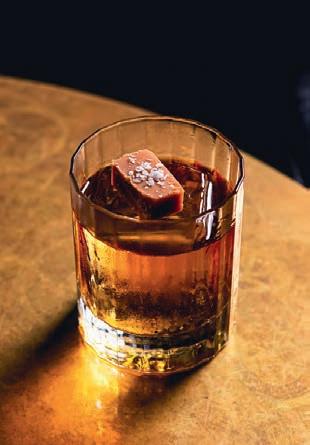

SERVE IN: Rocks glass
50ml brown butter bourbon*



2.5ml tonka bean syrup (vanilla or coconut will work nicely too)
10 dashes saline solution**
METHOD: Stir all ingredients down on ice and serve over a block of ice.
*For every 700ml bottle of your chosen bourbon use 125g unsalted butter. Cook the butter in a pot low and slow until brown, take it off the heat and pour your bourbon in quickly (watch out for the sizzle). Store in a container overnight in the freezer. Next day, remove the butter cap and pass the liquid through a coffee filter.
**Add 10g of salt to 100ml of hot water and stir.
SERVE IN: Tankard
35ml London dry gin
50ml fresh lemon juice
50ml 2:1 ginger syrup*
40ml McEwan’s export or similar ale
METHOD: Add five ice cubes to a blender with everything except the ale. Pour a bit of the ale in a tankard, blend the ingredients until nice and icy, then pour. Top up with the ale to your taste.

*Hot tip: The more skin you leave on the ginger, the hotter the burn! At home you can use fresh ginger juice or blend up some ginger and strain off the liquid through a muslin. Then add 200g of sugar for every 100ml of ginger juice. It should be a thick and heavy syrup.

SERVE IN: Nick & Nora glass or martini glass
25ml Portobello Road vanilla vodka
17.5ml lychee liqueur
15ml Singani63 or similar style of unoaked brandy
15ml Fino sherry































7.5ml cucumber agave*
15ml lemon juice
METHOD: Shake all ingredients in a shaker and double strain into a Nick & Nora glass or a martini glass. Garnish with an edible flower. *To make the cucumber agave you need 500ml agave nectar and 1 large cucumber. Chop the cucumber and sit it in agave for 30 mins, stirring regularly. The agave will become thinner as the water is drawn out of the cucumber. Strain and use.
SERVE IN: Coupe glass
10ml Cognac or brandy of your choosing
10ml Pineau de Charentes blanc































7.5ml Verjus
2.5ml Muyu jasmine liqueur
2.5ml sugar syrup (2:1)
100ml Champagne
1 white sugar cube
Angostura bitters
METHOD: Add all of the ingredients (bar the Champagne, white sugar cube and Angostura Bitters) to a mixing glass, and give it a stir over ice to dilute it slightly and bring the temperature down. Soak a white sugar cube in Angostura Bitters.
Add the sugar cube to a coupe glass, pour the Champagne on top and then strain the cocktail mix into the glass. Perfect!


SERVE IN: Martini glass
60ml Hepple gin
7.5ml Schofields dry vermouth
7.5ml Aperitivo co. Lyon vermouth
25ml water
METHOD: We do this little diddy a touch differently. We batch this pre-diluted and keep it in a Yeti flask in a freezer with the aim to serve at between –9 and -12°C. This adds a beautiful viscosity. If you don’t own a Yeti flask, you can batch and store in the bottle in your freezer for ice cold martinis on the fly. If you don’t want to batch, add all the ingredients in one and stir over ice to dilute and serve. Or you can omit the additional 25ml of water and dilute over ice to your preferred taste. Strain into a chilled glass and work out whether you’re in a lemon twist, olive or cocktail onion frame of mind.
SERVE IN: Coupe glass
40ml rye whiskey
25ml lemon juice
15ml Gamay syrup*
2.5ml lemon sherbet**
5ml Crème De Noyeaux (or a lighter amaretto)
2.5ml raspberry vinegar
20ml egg white


METHOD: Add all ingredients to a shaker, give it a wet shake with ice, followed by a dry shake without ice. Double strain into a coupe. We garnish with a stencil of a big apple using raspberry powder, but you can have fun with it. Edible glitter is never too much.
*300ml green tea, 300ml Gamay or light, bright red wine, 300ml cherry juice. Add this to 1kg of sugar and heat on low, just enough to allow the sugar to dissipate. Do not boil.
**Zest eight lemons into 300g of sugar, mix and allow to sit for 30 mins. Then add 300ml lemon juice, stir until combined and strain to remove zest.
Liam Davy, Head of Bars at Hawksmoor, has overseen a cocktail list designed to transport drinkers back to the period between 1995 and 2005, a decade credited with the global revival of cocktail culture. www.thehawksmoor.com; Instagram: @hawksmooredinburgh








The whisky trade in South Korea has been on a roller coaster trajectory but with a single malt in production and popularity on the rise there’s hope on the horizon


South Korea has long been a popular market for whisky. In 2010, South Korea imported £153m of Scotch whisky, the equivalent of 35 million bottles, making it the sixth highest market by value and ninth by volume. In 2011 the EU signed a Free Trade Agreement with Seoul, meaning that a 20% import tariff was abolished and all signs were pointing to South Korea shooting up the whisky league tables.

However, changes in drinking culture and


the law that impacted working culture, meant the market slid into a steady decline and by 2019 the number of bottles imported was down to just nine million, worth around £77m.


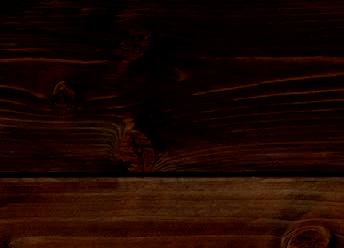


The following year in 2020, as a result of the pandemic, whisky imports to Korea reached a 21-year low, down almost 14% on the previous year according to data from Korea Customs Service. Korean subsidiaries of major drinks companies experienced serious dents in sales. Diageo Korea Co. dropped almost 33% in





























‘Imports of whisky have jumped 80% year-on-year’

turnover, while Pernod Ricard Korea saw nearly 12% decline in turnover according to reports at the time from Korea’s Yonhap News Agency.

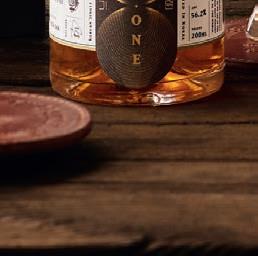
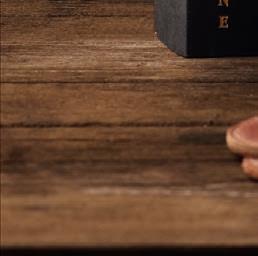

New data published by the Korea Customs Service shows that more recently things have taken an about turn and in the first three months of 2023 imports of all types of whisky have jumped almost 80% compared










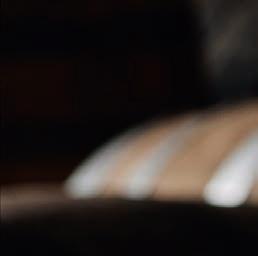

to the first quarter the previous year. This sudden jump in sales appears to have been driven by younger Koreans who are mostly buying mid- to low-priced whisky for mixing with soda water for drinking in highballs.
In the first two months of 2023 sales of whisky, brandy and rum exceeded those of soju (Korea’s national drink), according to data from Korean retailer E-Mart Inc. Last year more than one third of whisky sales were to people in their twenties and almost half to people in their thirties, according to a report from Yonhap News agency citing

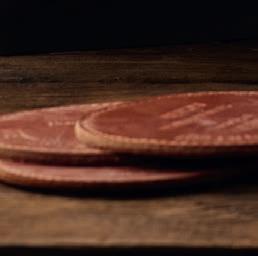




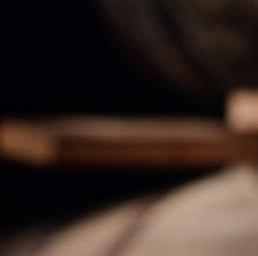



data from a large Korean convenience store operator. Like several whisky markets around the world, the biggest selling whiskies in Korea are brands you may have never seen, unless you’ve been to Korea, as they are more or less exclusively sold there. The three big brands that dominate the market are Diageo’s Windsor Whisky, Pernod Ricard’s Imperial Whisky and locally-owned Golden Blue Whisky. According to data from 2019 from Korea’s Fair Trade Commission, Golden Blue is the second biggest-selling whisky brand in Korea with 28% of the
market. Diageo is the biggest with 34% market share, while Pernod trails with just 8% of market share.

Golden Blue was first released in 2009 and is described as ‘Korea’s first 36.5% whisky’. As far as I can tell the whisky is made from 100% imported whisky from Scotland. They produce various non-age statement and age statement products, all bottled in a very distinctive blue bottle (think Haig Club). They have also more recently released a range of so-called ‘white whisky’ named ‘Phantom.’ This is described as a ‘modern whisky, for the new generation of drinkers’ that uses a filtering process of 1 to 25 micron filters to create the first ‘blended white whisky’ in Korea. It’s also bottled at 36.5% ABV. So, despite being below the UK and EU industry standard of 40% ABV, Korean law appears to allow this to still be labelled as whisky.


Not to be outdone by this lower alcohol whisky trend both Diageo and Pernod have, in recent years, launched their own alternatives. In 2015, Diageo launched W Ice by Windsor, bottled at 35% ABV. They have since added W Signature 12 and W Signature 17 to this range, also bottled at 35%. Pernod have also got in on the growing trend of lower ABV whisky in Korea and in 2016 released Eclat by Imperial, bottled at 31%.
Given the growth of single malt whisky globally it’s difficult to find countries that have not experienced a boom in single malt whisky distilleries. So, with Korea’s long interest in whisky, it’s surprising that the first single malt whisky distillery in the country was founded in 2020.




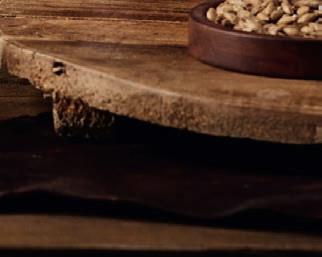







Three Societies Distillery is Korea’s first craft single malt whisky distillery and lies just 40 minutes north east of Seoul in an area known


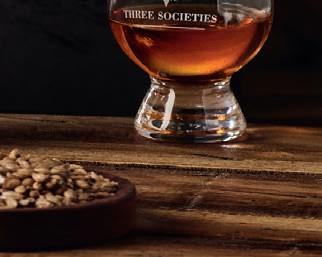
Because Dyson do vacuums, Walkers do crisps, and Glencairn do dram glasses.
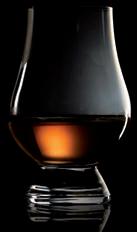 Iain Beresford - Scotland - Quantity surveyor
Iain Beresford - Scotland - Quantity surveyor
as the ‘Valley of Deer’ (not to be confused with Glenfiddich, which also means Valley of Deer).










The company is making an authentic whisky spirit guided by master distiller and blender Andrew Shand who has over 40 years of whisky production experience. The name Three Societies comes from the people who make up the company: a Scottish master distiller, a Korean American founder and CEO, and the Korean employees who make the spirit.


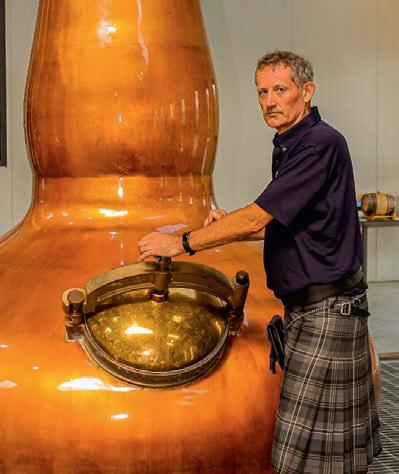













Using Forsyth’s copper pot stills and barley from Scotland they are making a very authentically Scottish style of new make spirit. However, given the climate in Korea their spirit will be dramatically influenced by the changes in the seasons. Producing around 250,000 litres per year they already have over 3,000 casks maturing in their warehouses, ranging from new oak, bourbon, sherry, Korean red wine and rum. The location of the distillery means there are dramatic swings in temperature throughout the year, which can vary as much as 60ºC across the seasons. As such, they are experiencing an Angels’ Share in the region of 10% per annum. Like other distilleries in Asia with higher Angels’ Share than in Scotland this means that they can release younger whiskies
that taste ‘older’ than you would expect. According to Andrew Shand, master distiller, in an interview with Whisky Magazine, he estimated that one year maturing in Korea was the equivalent of five years in Scotland. In early 2023 they released their inaugural single malt whisky, Three Societies Ki-One ‘Tiger Edition’ bottled at 56.2% ABV in 20cl bottles, non-chill filtered and natural colour. Aged in virgin oak for just 13 months this is still legally allowed to be called whisky in Korea as the minimum ageing there is just one year. Following on from the ‘Tiger Edition’, they released a ‘Unicorn Edition’, aged 21 months and an ‘Eagle Edition’, aged 26 months. The following on from their inaugural limited edition release trio a flagship KiOne Batch 1 aged two years and two months has been released bottled at 40% ABV and in 70cl bottles. Ki One means ‘genesis/origin’ and ‘hope’ in Korean.
Bryan Do, founder and CEO of Three Societies says, ‘We set out to create a world-class single malt whisky with local characteristics that Koreans can be proud of but enjoyed by everyone around the world. We believe we are the first to discover that Korea’s climate is ideal for ageing and distilling single malt whisky and in a relatively shorter period of time. We are not sure why no one believed whisky, especially quality single malt whisky, could come from Korea, but we are thrilled to have done it first.’
‘They are experiencing an Angel’s Share of 10% per annum’
The Borders Distillery (TBD) opened in 2018 – founded by John Fordyce, Tim Carton, Tony Roberts and George Tait, all veterans of the Scotch Whisky industry. They had a vision of bringing distilling back to the Borders by building the first whisky distillery in the region since 1837.

The distillery itself compromises a five-tonne semi-lauter mash tun, two Wash and 2 Spirit Stills, as well as a Carter Head Still. Single malt Scotch whisky is the primary focus for TBD, however, the Carter Head Still allows for the production of gin and vodka from its own malted barley base spirit.
The award-winning distillery had an exciting life before it became what it is known as today. Built in 1888, this iconic landmark of Hawick was formally home of the town’s Urban Electric Company. During the renovation, sustainability was built in as a key feature of the building’s character and function. From wild-garden roofs to self-ventilating Victorian windows, the distillery building has been preserved and reinvented to house conscientious production methods. These efforts were officially recognised when TBD won both the RIAS Conservation and Climate Change Award and the EAA Architectural Regeneration/ Conservation Award in 2019.
In 2021, TBD joined the Scotch Whisky Association’s RACE TO ZERO whilst also launching the Growers & Distillers programme, establishing a partnership between The Borders Distillery, Simpsons Malt and 12 local farming businesses in the Scottish Borders. Each of the farms can be reached within a 35mile radius of the distillery, maintaining an intimate level of production from seed to spirit.
TBD’s local team of distillers can turn their hands to every aspect of running the distilling operation. From milling and mashing, through fermentation and distillation, and on to filling casks and racking them in the warehouses. And on top of all that, they don’t have any tour guides at The Borders Distillery – instead it’s the distillers themselves who show visitors around.
The long-awaited arrival of the distillery’s first single malt hangs in anticipation. Last autumn saw the launch of TBD’s Workshop Series, activated with WS:00, which is their new make spirit bottled at cask strength.
To create WS:01, Borders distilled a small batch of rye spirit in 2019 and matured it in the same fresh-fill bourbon casks as the malt, creating an aromatic whisky. This is the first blended Scotch whisky to leave the Scottish Borders since 1837. Bottled without filtration, the blend is a marriage of 63.8% single grain and 36.2% single malt, entirely distilled by the Borders Distillery. Each WS:01 Borders Malt & Rye bottle is individually numbered, and only 5,988 will ever be released for sale in the UK.
We will only have to wait a little longer until we see another release from TBD, with WS:02 set to launch towards the end of the year.
Shop online at thebordersdistillery.com, or visit their distillery retail space in their hometown of Hawick. Tours run throughout the summer season, from Monday-Saturday until 28 October. The Borders Distillery is a five-star VisitScotland and Trip Advisor attraction, and works alongside the WelcoMe app to ensure distillery visits remain as accessible as possible to all.
To find out more about The Borders Distillery, please visit their website at www.thebordersdistillery.com. Alternatively, please call 01450 374330 or follow them on Instagram @thebordersdistillery.


Impress your friends with these facts and figures
59% 32%
Bottled blended Scotch whisky accounted for 59% of value exports, with single malt making up 32% of all Scotch whisky exports by value
Global exports of Scotch whisky grew to more than £6bn for the first time in 2022
>£6 BILLION








Laid end to end those bottles would stretch about 467,000km – that’s more than 11 times around the Earth


India overtook France to become the industry’s largest global market by volume for the first time, although Scotch whisky has just a 2% share of the Indian whisky market
Scotch whisky was exported to 174 global markets, with the equivalent of 53 bottles exported every second
37% £6.2 BILLION BILLION OVER £1
The value of Scotch whisky exports was up 37% by value, to £6.2bn

The United States recovered to reach over £1bn of exports – the first time since the 25% tariff on single malt Scotch whisky was suspended
Source: Scotch Whisky Association figures for 2022. www.scotch-whisky.org.uk

























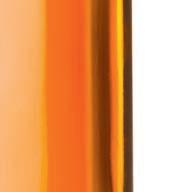








pring is here and whisky festival season has kicked off, with big events in Scotland and all over the world marking the calendar for whisky lovers. After a few challenging years, these gatherings of people and flavours are back in full swing and it is a joy to be able to share the passion for all things liquid sunshine with like-minded people, meet old and new friends, and welcome more curious palates to the wonderful whisky community.
If you are new to this sport, we are here to help! We asked some regulars on the festival scene for their top tips when it comes to approaching a whisky festival – their sage advice is sure to keep you right.
Staying hydrated is a mantra that will take you far on your whisky journey. Whether you are in for a one-day big bash or a long whisky-themed holiday, drinking plenty of water between drams will keep your senses sharper and enable you to appreciate more wonderful whiskies. Swirl some water

in your glass: it will keep you hydrated, prepare your glass for the next whisky and cleanse your palate too. Plus, it’s a great way to hold back any headaches on the following day.
You are surrounded by drams, it’s like a dream come true, and you have access to all of them. You want to make the most of your ticket but pressure is not a good friend. Whisky is there to be enjoyed so do not feel bad if you are not trying everything in sight. You can pass on a dram, ask for just a small taster, or if you still have some in your glass before starting with the new one, it is ok to set it aside. You do not have to drink everything, and spittals on a long tasting day can be good friends.


At most whisky festivals you will have anything from dozens to thousands of whiskies and other spirits to try. After a few, your senses might lose their freshness, so have a look around first and if there are any special drams you desperately want to try, don’t keep them for later. You’ll enjoy
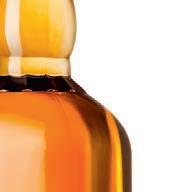

Fear not, C&S is here to help with a handy list of essential dos and don’ts
nuances if they are closer to the top of your list.































One of the most beautiful things about the whisky industry and those who love it is the great stories behind the drams and the moments you share with the people around you. Take time to talk to the people behind and around the stalls, or those who are sitting next to you at a warehouse tasting. You might get some incredible insights from the people who make the whisky, maybe get a special sneaky taster and even make friends for life. Also, a must for all occasions in life – be polite and wait your turn.
not too heavy or spicy –meal will help you keep your head right for longer. Many suggest eating ‘beige’ food, but anything that will keep your stomach right without compromising your tastebuds or burning them is good. Many festivals offer food options or nibbles on their stands so a break to get some absorbing matter in is a good strategy.

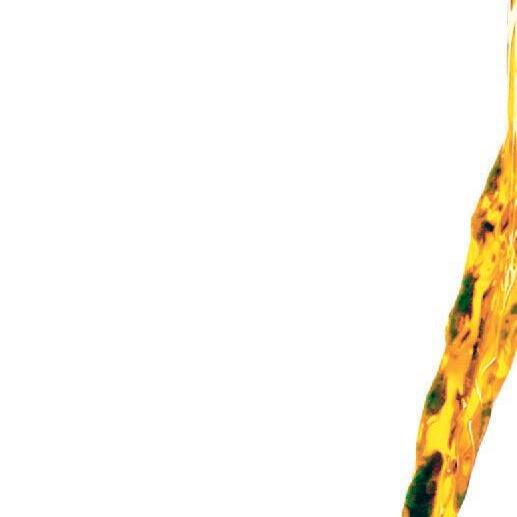
before you head out, or having a















At almost any whisky festival, it is fairly impossible to try everything on offer. So, a bit of research can go a long way in making the most of the experience. Whether it’s a few minutes browsing the leaflet at the entrance, doing some Googling before you head out, or having a look at the programme in advance, it will ensure you won’t miss out on drams you love. It is also worth checking the programmes of masterclasses/workshops ahead as some may sell out quickly.

Some whisky festivals take over towns, islands and surrounding areas: have a look at the collateral events, they might hide something special.



be there for you to taste. Why not try something different? This is the perfect place to explore new flavour horizons, and maybe add a couple of new favourites to your list.




Although there might seem to be a lot of thinking above, these are thoughts to keep you right and happy and make sure you get the most out of your experience. However, there is also space for spontaneity. So even if you are rocking up at a festival on a remote Scottish island with a backpack and a tent, there are still plenty of opportunities to go on an adventure and enjoy the moment.
Now go enjoy! Slainte mhath!


YOu are
surrounded by a dream come true
The burgeoning secondary market is flipping new releases for huge mark-ups, so why don’t distilleries simply charge more for their product?
Written by Mark LittlerThe secondary market for modern collectable bottles is relatively new, emerging as recently as 2018, and as such its behaviour is based on only a few years of data. Over recent years it has been apparent that some distilleries are releasing modern bottles well
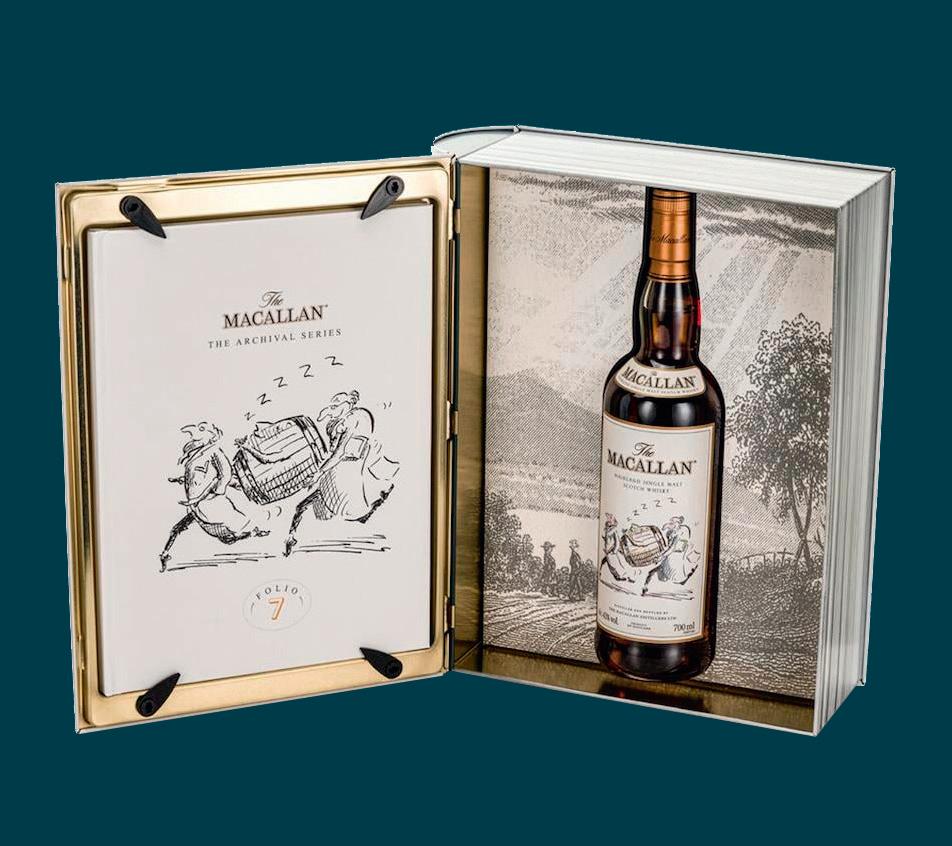
products. While this may initially be seen as a way to price bottles correctly for drinkers, it turns out that this underpricing behaviour is common across other more established equity markets including stock markets, and may well be intentional. Although what the intended results are, is up
below the true market value of their for discussion.
Let’s start with a couple of recent examples: The 2022 Springbank 30 year old and The Macallan Archival Series Folio 7.
In 2022 Springbank released their new core range 30 year old with an RRP of £850, limited to 1,800 bottles. Since release the lowest auction price has been £1,800 and the highest is £3,850. Prices have stabilised around £2,200 but retailers have bottles listed for £6,000.
£850 for 1,800 bottles gives Springbank £1,530,000 gross profit (that’s before you take off any costs). If Springbank had priced those bottles at the lowest auction price (£1,800) then their gross profit would have been £3,240,000, and at the retailer price they would be looking at just under £11million gross. That means Springbank has handed between £1.7million and £9million of potential return to collectors, investors and other businesses.
The Folio 7 was released at £350 per bottle, and assuming a limited edition of 3,000 then Macallan’s gross profit was £1,050,000. Working with a price peak to match the Folio 6 (£2,500) and the current auction value of £1,200 then The Macallan have handed out between £2.5million and £6.4million of potential gross profit. This is likely conservative because Macallan stopped disclosing limited edition
numbers from Folio 3 onward. We use assumed release numbers from non-official sources, however anything up to 6,000 may be realistic, which would make the sacrificed profits even more significant.
This is a really interesting question, and one with no definitive answer. The popular suggestions are that distilleries are pricing appropriately and for drinkers. This is the obvious answer, after all the Archival series is all No Age Statement (NAS) whisky, and Springbank even says they price for their drinkers. However, if those are the only reasons, why release a limited edition core range and create such elaborate packaging for NAS whisky?
The counter argument is that by underpricing their offerings on release, distilleries are purposefully encouraging the secondary market. Underpricing leaves potential profit in the bottles, which encourages investors and increases competition at release, making bottles harder to get hold of for drinkers but providing important secondary benefits to distilleries.
If it seems counterintuitive for businesses to sacrifice millions of pounds of profit then a flash look at economic theory shows this behaviour is habitual in more established equity markets. When releasing shares onto the stock market it is common for the initial public offering to be below the actual market value of the shares.
There are multiple theories as to why this happens, and without delving too deep, potential reasons for willingly undervaluing on the supply side (in our case the distillery) can be summarised as: reducing potential for failure, satisfying long term clientele, wealth effects for employees and executives, attracting further interest and marketing in general.
The disposition effect may also be at play here. This is a theory that investors tend to hold on to assets that are losing value and only sell ones that they have made a profit on. In the stock market it has been used to explain how investors themselves may maintain the secondary market value above the initial offering price, by generally only selling when they are making a profit, as described in Füllbrunn,
Some distilleries are releasing modern bottles well below the true market value
S., Neugebauer, T. & Nicklisch, A. Underpricing of initial public offerings in experimental asset markets. Exp Econ 23, 1002–1029 (2020).
The supply side theories all seem applicable to the whisky market. By releasing bottles around historically successful prices distilleries guarantee their success. Furthermore, it is an open secret that distilleries like The Macallan have a priority list for VIP customers – this is how bottles like the Folio 7 appear at auction before ballots have closed. Releasing at similar prices keeps core customers happy, and returning, which in turn guarantees sales.
Low prices can also act as an unofficial bonus for staff, who get anything from early access and staff discounts to exclusive releases, like the Springbank Countdown Collection 30 year old which was released in
January 2022 as a staff exclusive. This keeps employees happy, plus staff exclusives may have knock on positive impacts on secondary market values.
The final two points are marketing based. By keeping prices low and leaving a profit in it for buyers the distillery can drive interest in new audiences – rather than limiting themselves to just drinkers, now they appeal to the widely growing alternative asset market as well. Furthermore, sell out releases and headline grabbing secondary market prices are good for general marketing, which of course brings in new customers – both drinkers and investors.
The above theories suggest that there is a solid financial basis for distilleries to undervalue their stock on release. What’s more, even a quick look at modern releases shows that more and more bottles appear to be designed with collectors and investors in mind.
Sure, a well designed label and bottle can aid marketing on a shelf, and add sensory experiences for drinkers. But the reality is that high value collaborations with car companies and international artists likely doesn’t add more to the drinking experience compared to a standard, welldesigned label and box, and that these bottles are unlikely to
face competition on standard retail shelves. Rather, fancy packaging and high value collabs help bottles appeal as a status symbol, and that status symbol is enhanced by high secondary market values.
Which all means that it is probably in a distillery’s interest to maintain secondary market values for their whiskies.
There isn’t necessarily an easy solution. While drinkers want
to keep the price low, as we have seen with examples like the Springbank 30 year old, low prices drive increasing competition. The impact of increased competition is that while drinkers can afford the bottles, they’re much less likely to be able to get hold of them at the RRP.
Conversely, when prices go up competition may be reduced but drinkers still aren’t happy as they cannot afford their favourite whiskies. But investors and collectors also aren’t happy,
Growth at the top may mean Springbank or Macallan has to be your special occasion dram
and this combination means the distillery risks reduced sales and a knock-on impact for long term profitability. In a worst case scenario, on a big enough scale distilleries keeping all profit for themselves might risk a market collapse that would harm their own industry and future sales.
The phenomenon for quick, high value returns on modern bottles is a relatively recent one. The Folio 1 was released in 2015 for around £250 and as recently as 2018 you could get hold of it for £600; it is even more recently that we have seen rapid, thousand pound jumps on release for (some) modern bottles. However much drinkers don’t like this new state of affairs, the reality is that it is likely here to stay; the market has been stable through economic fluctuations and the Covid-19 pandemic.
This is understandably difficult for long term lovers of single malt. We appreciate why drinkers who remember buying bottles of Macallan 18 year old for less than £30 are baulking at a £300+ price tag for the same whisky. Similarly with the 30 year old Springbank, which used to be available for a fraction of today’s RRP price, never mind the secondary market values! Unfortunately the trends we are seeing at the moment means distilleries aren’t likely to change strategies, and long term drinkers of single malt may have no choice but to evolve with the market.
One of the benefits of a thriving single malt market is the influx of new distilleries, independent bottlers and even blenders. Growth at the top may mean Springbank or Macallan has to be your special occasion dram, but there has never been a better time to try a huge

array of single malts.
There are 144 single malt and grain distilleries in production in Scotland, and that’s not counting the thousands of independently bottled whiskies produced each year. One solution would be to experiment with new distilleries, and explore the hundreds of platforms that offer reviews and tasting notes for accessibly priced whiskies. Also look at independent bottlers, who offer fantastic options at a fraction of the price of official bottlings, and whose selections often include cask strength and single cask releases that you’re unlikely to get hold of in official bottles.
Then, just keep entering those ballots for your unicorn whiskies, and when you get them, open and enjoy!























































s custodians of The Glenturret, the distillery has a responsibility and duty to move towards a more sustainable, environmentally friendly future. With this and the well-being of The Glenturret team in mind, the decision was made to replace the Mash Tun in order to reduce the environmental footprint and increase production in a sustainable way in the years ahead.
The Glenturret has always been passionate about protecting its traditional values. In 2019, distillery manager Ian Renwick was asked to look at increasing the distillery production whilst ensuring that the integrity of The Glenturret’s by hand and heart approach was maintained. Ian appointed local engineers Allen Associates, who are industry leaders in process design, to look at opportunities to make sustainable changes whilst increasing volume. Ian and the team spent several years designing a new process for the distillery that involved replacing our previous Mash Tun. It was recognised that the old Mash Tun’s design had several limiting factors. The process was far from energy efficient, it required high volumes of water and created unnecessarily high levels of waste. Mashing was incredibly labour intensive for the team, and it also limited the ability to process certain types of malt.
The new Mash Tun at The Glenturret has a capacity of 1.9 tonnes and in terms of production increase, the new process will give the distillery
sustainable future. The Glenturret, as always, will continue to concentrate on quality over quantity and respect traditional values, upholding small batch production.
Overall, installing the new Mash Tun took approximately five months with construction starting on the 31 January 2022 and commissioning began on the 27 June 2022. No waste was sent to landfill during the project.
The new Mash Tun has formed part of several sustainable upgrades to the distillery this year, with £1.4m having been invested into additional energy-saving processes so far. The Still House now features new efficient heating systems for both the Wash Still and Spirit Still. The distillery has also invested in a brand new Wash Still preheating arrangement that will help to contribute to energy savings.
There are several other projects ongoing that will allow The Glenturret to further reduce the impact on the environment, whilst retaining the integrity of the distillery’s distinctive new make spirit.
The Glenturret will always operate as a small batch distillery as they value the traditional approach to whisky making, however it is clear that the distillery is forward-thinking and continues to seek out opportunities as they arise in the future.

To find out more about The Glenturret Distillery please phone them on 01764 656565, email enquiries@theglenturret.com, or visit their website: www.theglenturret.com












‘The Dram Tram had a busy few days hosting tastings during the Spirit of Speyside whisky festival’Main image: Some of the volunteers at Keith & Dufftown railway (l-r): Alan Moir, Bruce Crow, John Roberts. Far right: Jack the Railway station dog enjoys a ride.


 Written by Morag Bootland
Written by Morag Bootland

Anyone who has visited Speyside will know that the area’s distilleries were once served by a network of railways used to transport coal, barley, wood and steel in and whisky casks out. While many of the lines that served the distilleries have been consigned to memory, the eleven-mile stretch of track that links Dufftown to Keith is Britain’s most northerly heritage railway and is maintained by a team of volunteers. And it was this team who came up with a unique way to showcase the whiskies of their beloved home towns to visitors. The Dram Tram is really a railway carriage that was originally built in 1960 and served a long life running services in the south of England, then spent some time in the East Anglian Railway Museum before heading to Dufftown in 2005.
Here she would sit quietly in the sidings until Chief Engineer Bruce Crowe had the bright idea to create the Dram Tram. Alan Moir was one of a team of eight volunteers who spent 16 months lovingly refurbishing the old carriage to create a moveable whisky lovers’ paradise. He now hosts tastings on board.
‘This is the whisky line and visitors always got a wee thimble of whisky, but now it’s a much better experience for customers,’ says Alan. ‘We wanted to create something luxurious and comfortable.’
And comfortable it certainly is. With its striking tartan carpet and curtains, large bucket chairs and tabletops made from cask ends, it’s the ideal place to enjoy a leisurely dram or two while wending your way through the glorious Speyside countryside. The cleverly constructed bar is made from whisky barrels sourced from the Speyside Cooperage at Craigellachie which were halved lengthways to provide storage space for glasses at the back. There is space for 28 people to enjoy a tasting and

Retail - Rare Bottles
Broking - Tastings Investment







Broking - Tastings - Investment IWC SCOTTISH MERCHANT OF THE YEAR 8 TIME WINNER
IWC SCOTTISH MERCHANT OF THE YEAR 8 TIME WINNER
Incredible range online and instore
New Bridge of Allan flagship store NOW OPEN! Bridge of Allan · Edinburgh Stirling · Inverness · London woodwinters.com

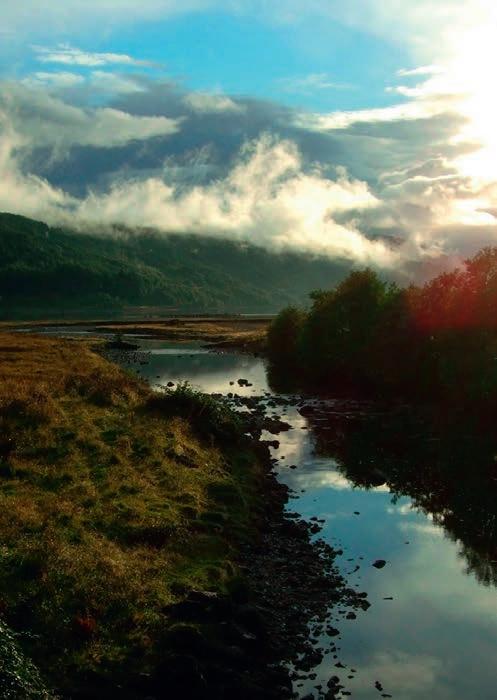
Incredible range online and instore

the option to add the guard’s van which provides room for a buffet.


The Dram Tram took its inaugural run in March and recently had a busy few days hosting tastings on board during the Spirit of Speyside whisky festival. The tasting included drams crafted by distilleries along the whisky line, including Mortlach, Singleton, Glenfiddich, Balvenie and Strathisla, as well as lots of fascinating information about the history of Speyside’s railways and distilleries.
The festival run was followed by a charter to celebrate the significant birthday of a Bollywood actor. And with bookings now rolling in Alan’s only concern is that the volunteer team might struggle to keep up with demand. ‘We’re giving ourselves good problems,’ he laughs.


Thanks to the popularity of the Dram Tram, the volunteers at Keith and Dufftown Railway have plans to create more whisky tastings in the future to remember some of the lost train lines of Speyside, like Portsoy to Elgin and Elgin to Dufftown. ‘We want to create something to make a real connection between the distilleries and the railway,’ says Alan.

For more information on the Dram Tram and the railway visit www.keith-dufftown-railway.co.uk









FREE to download App that gives you up to date news on the whisky industry, plan your own distillery visits, see where your closest bottle shop or bar is. Create you own favourites list in your profile, use it with no data coverage.
















































Befuddled by the dizzying range of drinks on offer? Feel the fog of confusion lift with our nine-page guide to what the real experts drink
&
The first bottling in the new Scottish Field Whisky Series of exclusive cask bottlings
















Exclusively selected single cask of Dailuaine 12 YO PX Sherry













Finished 46.9%



LESS THAN 100 HAND-NUMBERED BOTTLES LEFT




£79.99 + postage within the UK only.
Over 18s only.


SINGLE MALT
47.95 40
This pioneering whisky, created by David Stewart MBE, was launched in 1993 and paved the way for other distillers to ‘finish’ their whisky in a second cask. It is initially matured for over 11 years in American oak ex-bourbon casks before being transferred to Spanish oak ex-sherry casks for around nine months.

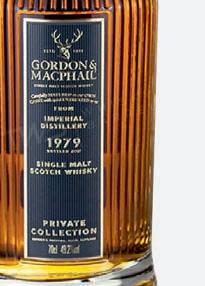

NOSE: Honey, caramel wafers, vanilla and cinder toffee.
PALATE: More honey, along with custard creams and a sweet citrus note.
FINISH: Light baking spices, gentle oak and a touch of dried fruits.


SINGLE MALT
73.45 46
Owned by six generations of the Grant family since 1865, Glenfarclas is the archetypal sherried Speysider. Their 15YO expression is entirely matured in European oak ex-sherry casks to give bold, rich and spicy notes.
NOSE: Sweet dates, dark cherries, sultana cake and plum jam.
PALATE: Dark chocolate, brambles, blood oranges and toffee apples.
FINISH: A firm oakiness gives way to an earthy spiciness of cinnamon and clove.









3,000






49.2
Imperial distillery was established in 1897, the same year as Queen Victoria’s Diamond Jubilee, and was named after the royal house. It closed in 1998 and was subsequently demolished to make way for a new distillery, Dalmunach. This whisky is from a single refill hogshead, bottled by renowned independent bottler Gordon & MacPhail.
NOSE: Unctuous notes of beeswax, honeycomb and antique wood are complimented by ripe tropical fruits.



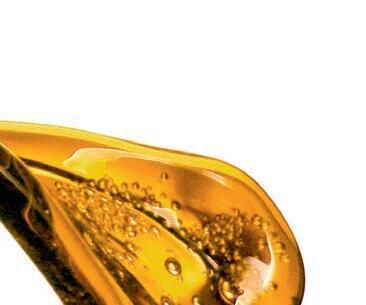



PALATE: Orange oils, manuka honey, peaches, mangoes, cherries and rum soaked raisins.


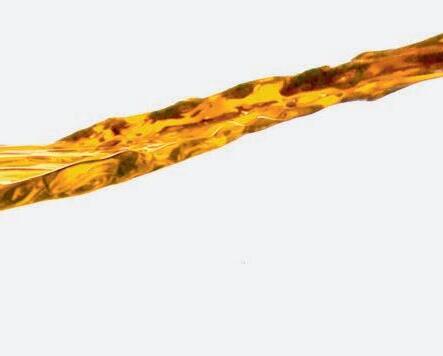
FINISH: Long and lingering with sandalwood, milk chocolate and toasted nuts.

HEAD OF PRIVATE CLIENTS AT BEAMISH INTERNATIONAL
www.beamishinternational.com
Dr. Christopher White is an award-winning whisky writer, presenter, host and judge, with over 15 years’ experience in the industry. Beamish International is a global private client business specialising in advising on the acquisition of rare single malt whisky.


IRISH SINGLE POT STILL
39 40

An Irish, single pot still whiskey aged between 7 and 10 years, matured in new bourbon, refill bourbon and sherry casks.

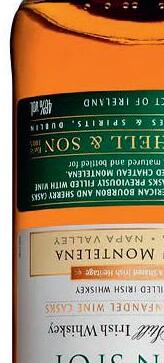
refill
NOSE: Poached pear, fragrant vanilla and crisp green apple.

IRISH CASK STRENGTH
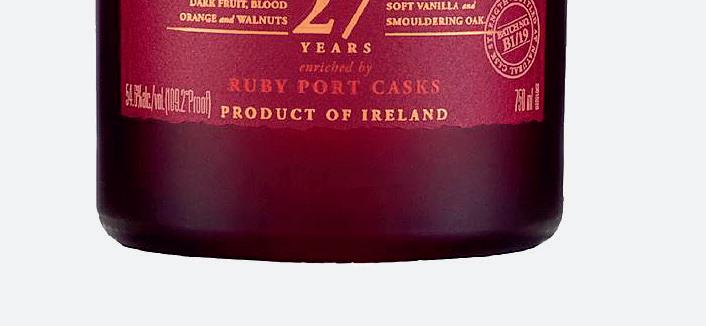

67.95 56.5
































A peated, cask strength follow-on from the Original Teeling – Blackpitts. Matured in ex-bourbon.
NOSE: Vegetal with ash, rubber gloves, vibrant baking spices, and uplifting citrus.




PALATE: Metallic and earthy with meaty BBQ, grilled pineapple and slight peat.











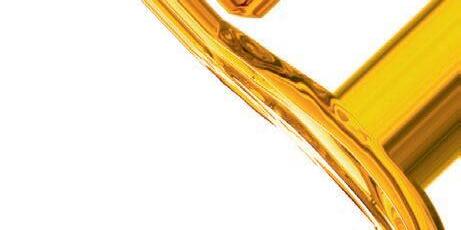








FINISH: Lashings of maple syrup, liquorice and orange peel and coffee to finish.
PALATE:

Damp hay leads to pungent honey and freshly whipped cream.
FINISH:
Malt and nutmeg deliver, with lingering marshmallow and astringent sherry.


IRISH SINGLE POT STILL
475 53.5


The oldest core range Redbreast, aged for 27 years, triple distilled and matured in bourbon, sherry and ruby port casks.
NOSE: Loaded vanilla with a captivating, sweet cherry. Baking spices and buttery, shortbread biscuit.






PALATE: Chewy dates and walnuts. Rosemary and a mild oak with juicy blackberries.
FINISH: Mango and ginger. Honeyed figs and a bitter, cocoa finish.
FREELANCE WRITER, BLOGGER AND PHOTOGRAPHER


www.thewhiskeyscoop.co.uk




Jordan’s passion for whiskey led him to establish The Whiskey Scoop, a website that seamlessly blends; reviews, news updates and interviews. By offering readers a unique perspective, Jordan has created an indispensable resource for whiskey lovers.






SINGLE MALT
150 46.5
Part of a new Dalmore range of vintages. (The Vintage 2007 and 2003 have kicked things off). I find the 2007 more interesting and more complex before adding water. This Dalmore has matured in a combination of sherry casks including amoroso, apostoles and matusalem and some additional Marsala wine barrels.
NOSE: Starts with lovely sweet caramel aromas, dark chocolate and chocolate orange as it develops nicely in your glass.








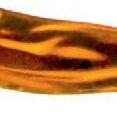








PALATE: It has some rich orange marmalade flavours, a little bit of ginger, dark chocolate and bitter coffee. By adding water it becomes sweeter.
FINISH: The finish has some charred oak. The chocolate and marmalade carry on with clove and aniseed.





SINGLE MALT
64 54.7



Each year we get the chance to take part in Glen Scotia’s Campbeltown Whisky Festival by stocking their annual limited release marking the occasion. This lightly peated expression from Glen Scotia has been matured in white port casks. Each year this release proves a popular choice among fans. It won’t be around forever!
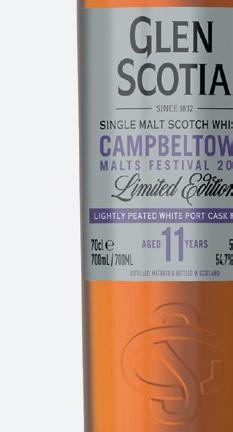
NOSE: Stewed fruits and candy floss aromas alongside coastal, seaweed and salty air notes. Water brings out more of the waxy, oily notes.
PALATE: Tarry with gentle peat smoke and some treacle toffee plus spices of nutmeg.
FINISH: Peaty with salty seaweed.
SINGLE MALT 70 51.2
Fettercairn are teasing their fans and some collectors by introducing a series of small batches. The Warehouse 14 follows on from Warehouse 2, a small batch 16YO and a small batch 18YO. It’s an interesting limited edition matured in bourbon barrels and finished in ex-beer barrels.



NOSE: Fruity and sweet with cooking apples, toffee apples and autumn orchards.

PALATE: Fresh pastries with quite a waxy mouthfeel and a slightly salty tang alongside fruity toffee, a touch of liquorice and some under-ripe banana all develop over time.
FINISH: A warming finish with delicate spice and some bitter citrus fruits at the very end.
NATIONAL RETAIL MANAGER, THE WHISKY SHOP















www.whiskyshop.com



The Whisky Shop is the largest independent specialist retailer of whisky in the UK. The website enables the company to meet an even greater global demand for Scotch whiskies. Darren is a senior judge on the Scottish Field Whisky Challenge.



This whiskey is a blend of malt and grain whiskeys, with a high malt content highlighting the unique style of the Powerscourt Distillery. A 50/50 blend, the malt whiskey has matured in first-fill ex-bourbon barrels and the grain in a combination of ex-bourbon and new heavy char oak casks.
NOSE:














Cinnamon and fresh orchard fruits, herbaceous with brown sugar, toffee and a distinct maltiness.
Rich, soft and sweet. Vanilla icing and malt spice with a peppery clove finish.
FINISH: Warming malt spice with good length, drying at the extremities of your tongue.



USA • BOURBON
145 48.2








Confiscated is named in tribute to the barrels that were seized by the government ahead of prohibition.
NOSE: Red apples, gardenia, freshly baked banana bread and sourdough crust.
PALATE: Cinnamon spice, toffee, citrus and crackers.

FINISH: Spicy cayenne pepper balanced nicely with white grapes.


CANADA • RYE WHISKY
79.99 50
One of the few 100% rye whiskies available, WhistlePig 10-year-old has its origins in Alberta, Canada. But its celebrated reputation comes from reageing in new, charred American oak before being finished in first-fill ex-bourbon barrels.



NOSE: Fragrant allspice, orange peel, anise, oak, char and caramel.


PALATE: Sweet on the palate, with hints of caramel and vanilla, followed by rye spice and mint.

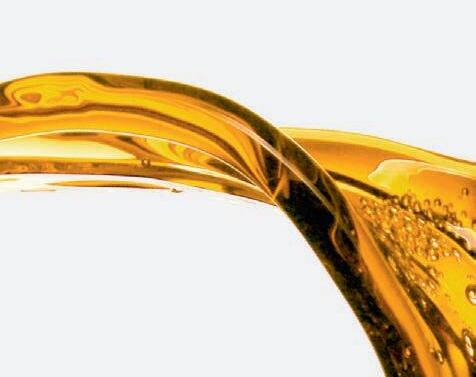
FINISH: A long finish of warm butterscotch and caramel.


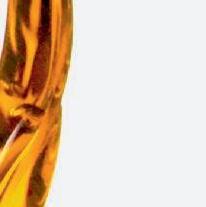



OWNER, ROBBIE’S DRAMS WHISKY MERCHANTS, AYR robbieswhiskymerchants.com
Robbie’s Drams Whisky Merchants is an independent family-run business, situated in the seaside town of Ayr. Fine character, great whisky since 1984. Here Robin selects some of his favourite malts from across the globe.


SINGLE MALT
50 48
A traditional peaty dram taken to another level with the use of sherry casks, giving a great sweet meets peat dram.
NOSE: Smoky, sweet and honeyed notes. Deep levels of smoky bacon and salty smoked fish.



PALATE: Sweetness at first, followed by a salty seaweed, then almost like an old fashioned pack of scampi/bacon fries you would get in a bar.
FINISH: Smooth, perfectly peaty and complimented with the sherry notes. Delicious!




SINGLE
350 50
Bunnahabhain is a favourite of mine from Islay and this 22 YO PX sherry cask does not disappoint.
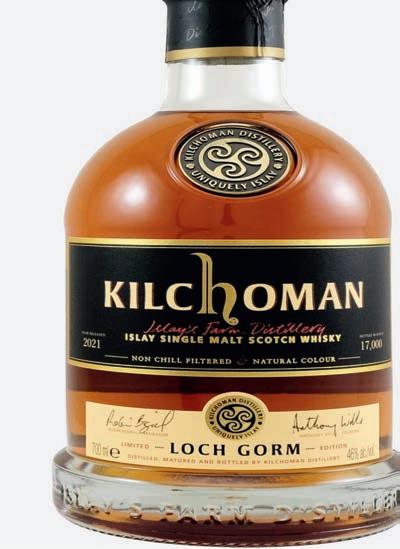







SINGLE MALT
80 46
This whisky delivers a peaty dram which is well-rounded with the use of sherry.


NOSE: Fruity sweets, blended in with a musky sweetness, old leathery notes, rich liquorice and dark cherries, all wrapped in a lovely coat of ashy smoke.
PALATE: A peaty sweetness which delivers gentle sweet sherry notes, dry like a rich dark chocolate at the back of the throat. Nutty



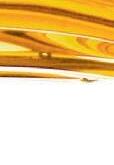



Pleasantly long finish, sea salty and sooty, just what you’d expect from Kilchoman.
NOSE: Lovely sweet toffee, vanilla, caramel and salted nuts. Rich coffee and dark chocolate.
PALATE: Dried fruits, nutty and peppery. Rich smoke at the back of the throat.




FINISH: Peaty and smoky, with subtle sherry hints which leave a distinctive earthy flavour.








OWNER OF THE PIPER BAR AND WHISKY ENTHUSIAST

www.thepiperbar.com








Gillian has owned the award-winning Piper Whisky Bar in Glasgow for eight years and is incredibly passionate about whisky. She is a collector and is currently experimenting with casks.


62 42

Produced by Mezcalero Don Fortino Ramos, who has been producing Mezcal for over 40 years, he is assisted now by his daughter Xitlali. Their main focus is sustainability.
NOSE: Bright and intense with tropical fruit, a touch of nail varnish and white pepper.



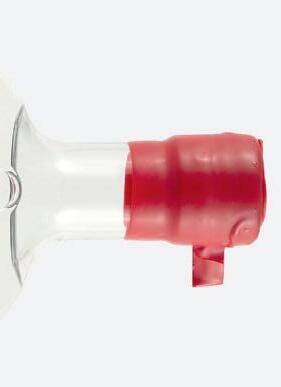

PALATE: The palate explodes with bright tropical and herbal notes.




FINISH: The finish is long and bright with tropical notes and a touch of pepper.

45 46
This is part of the first batch of spirits from the new MacMillan Spirits Co. They have launched with a classic style gin, a single cask Caol Ila and this rum. They are building a new distillery on Benbecula with plans for spirit to run later this year.

NOSE: Soft and warming, some tropical notes of banana and pineapple then some soft vanilla and coconut.





PALATE: Soft and gently warming notes of pineapple and banana along with soft spice and vanilla.








FINISH: The finish is soft, gently spicy and long.

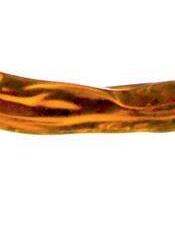


This 100% Grande Champagne Cognac was made with ugni blanc grapes, distilled in 2010 and matured in exPauillac wine casks. Bottled at cask strength. Non chill filtered and natural colour. A release of 246 individually numbered bottles.


NOSE: The nose is tightly wound with poached orchard fruit and oak spice.


PALATE: The palate is rich, oily, intense and complex with poached fruit, a touch of sweet berry and spice.



FINISH: Rich and intense, the finish lingers and slowly fades.






CO-OWNER, THE GOOD SPIRITS CO., GLASGOW
















www.thegoodspiritsco.com
Matt can usually be found at the helm of The Good Spirits Company on Glasgow’s Bath Street, hosting monthly whisky, gin and cocktail tastings.

1494

SINGLE MALT
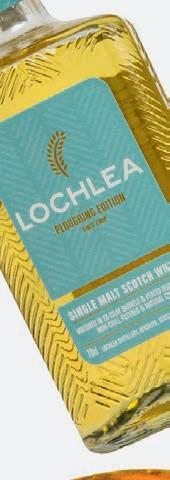
SINGLE MALT
50 46
NOSE:
























Where the first legal distilling of alcohol was recorded in 1494. Soft mellow vanilla, caramel, sweet pear drops.

Matured in ex-Islay barrels and peated quarter casks.

PALATE:
FINISH: delicate.
Smooth and creamy, vanilla, dried fruits and citrus. Medium length and




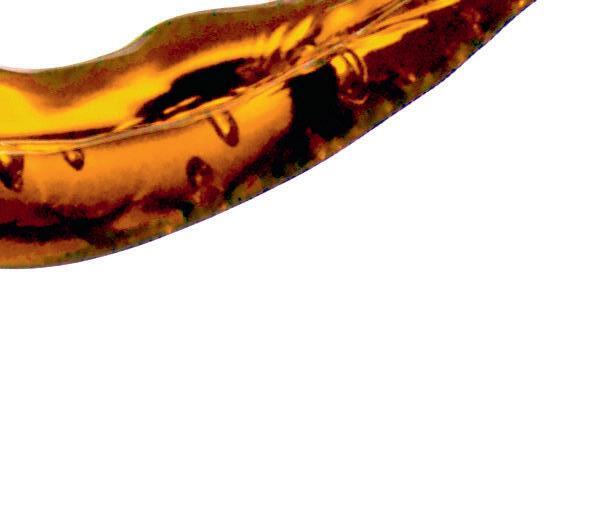














NOSE: Lightly peated, cooked apples, sweet.
PALATE: Delicate peat, sweet apples, rich and oily.
FINISH: Good length, peat lingers.


SINGLE MALT
100 46
Distilled 2010, bottled 2023, limited to 6,550 bottles.


NOSE: Sweet vanilla and orchard fruits.
PALATE: Crisp green apple, cut grass, sweet, warm spices.

FINISH: Medium length, white pepper, finishing with apple.
OWNER, ROBERTSONS OF PITLOCHRY












www.robertsonsofpitlochry.co.uk
Ewan bought Robertsons of Pitlochry in 2013. Robertsons, an award-winning whisky shop and tasting room, have their own range of single cask whiskies and a gin. A warm welcome is always on offer and friendly advice is readily available.



In the same way as it used to be the case that a city couldn’t be considered a proper American city unless it had a beer and a baseball team, nowadays you’re not a proper Scottish island unless you have a gin. From Arran in the Firth of Clyde to the outermost regions of the Outer Hebrides right up to Shetland and Orkney you’ll find a local distillery merrily churning out what is now indubitably Scotland’s other national spirit.
Bottled at 42% ABV.
From Jura. On the nose it’s complex, floral and herbaceous. Highly scented floral notes develop further on tasting and there’s a spicy snap in the after taste. If you like Hendrick’s, Lussa Gin is for you.





Bottled at 47% ABV.
On the nose camphor, lavender and strong pine emerge first. On tasting cinnamon-like notes are noticeable as are floral notes but juniper is first. If you like Tanqueray you’ll like this.
There are literally hundreds of craft gins on the market and by ‘craft’ I really mean small batch and made by hand. The sheer quantity of brands currently available makes for a very crowded market and it’s increasingly difficult for them to gain any sort of traction.
That is particularly true of small producers as they don’t have the budgets of the big guys not just to promote their gins but also to secure decent distribution in important markets like

Bottled at 46% ABV. Lots of pine upfront with lavender and forest floor notes. On tasting there’s a hint of sweetness to the juniper character. An old school classic.
If you’re a fan of Plymouth Gin this one is waiting for you.





Bottled at 45% ABV. Fresh with juniper on the nose. As the flavours develop in the mouth there is a saltiness with hints of lavender and aniseed. If you like to experiment with flavour, try this one.

Though the gin market is enormously saturated, island-based brands with a unique story to tell are leaps and bounds ahead of their mainland competition




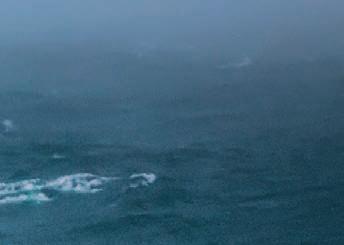
Bottled at 46% ABV.
On the nose it is fresh with juniper, sweet orange and candied lemon. It then develops into richer juniper, rhubarb and citrus notes on the palate. This packs a punch.

Bottled at 40% ABV. Kelp that has been harvested from the icy waters surrounding the Isle of Tiree give this gin a maritime sweetness as well as salty, floral, vanilla and grassy notes. A long, warm finish.

the US. Increasingly therefore we are seeing the gins with a story behind them become the ones that attract the most buzz. And that story usually has a range of themes including the idea of ‘terroir’, a concept borrowed from French wine producers that sums up how a product can embody all the many environmental factors related to where it is made. A sense of place if you like.
Simply being Scottish is no longer enough to create a compelling story. But the ante is well and truly upped when you are the people distilling a gin on a remote Scottish island that many people will never have heard of. It’s next level in terms of grabbing attention particularly when island distillers embody something of their unique habitats in the liquid itself.

As a result there is a great deal of experimentation to create recipes with a balance of traditional and local botanicals, again referencing the idea of terroir in the final flavour. For my money, however, the story itself is not quite enough either –it has to be matched by quality of product.


Bottled at 43% ABV. Full bodied on the nose with powerful juniper, citrus, pine and liquorice, which gives way to warm redcurrant, heather and lavender notes on tasting, with a touch of aniseed.

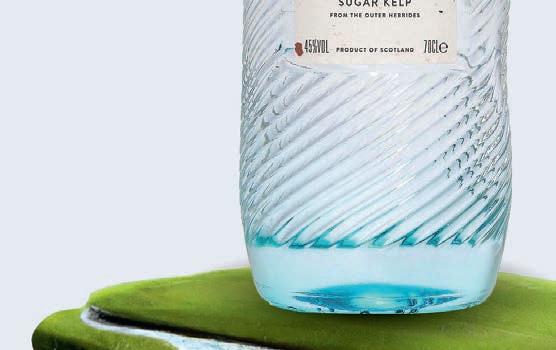



Bottled at 46% ABV. A careful balance of juniper and seaweed for a bold maritime flavour with floral and herbal notes. Dry and rich with a slight saltiness before a warm finish with a hint of spice.

Take Lussa Gin from the magical Isle of Jura for example. Launched in 2015 by three enterprising local women – Claire Fletcher, Alicia MacInnes and Georgina Kitching –who set up a distillery on the Ardlussa Estate in the north of the island. Incidentally Claire is a member of the Fletcher family who rented Barnhill, another house on the estate, to George Orwell who wrote Nineteen Eighty Four there.

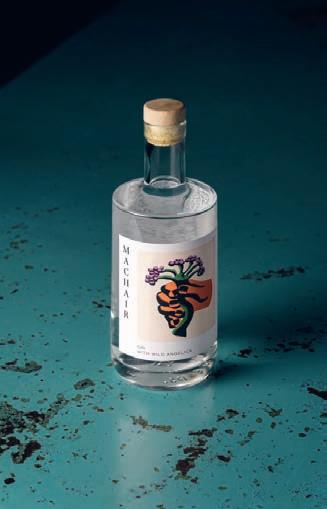
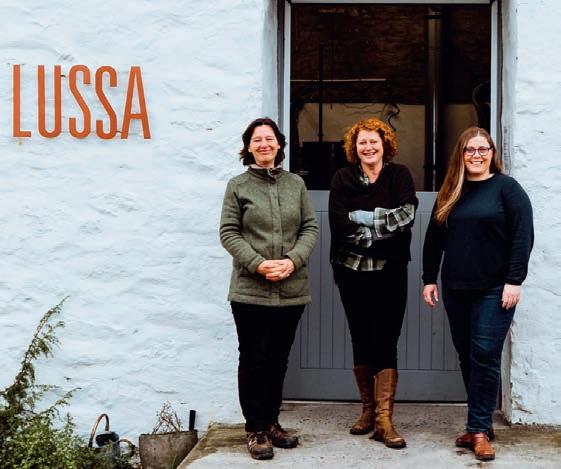














When we think of Jura we think of green, lush landscape and the wildness of the sea surrounding it. Many of the 15 botanicals that make up the Lussa Gin recipe are grown or gathered on the island so Lussa Gin really could not be more local.




Lemon thyme, ground elder, Scots pine needles, bog myrtle, honeysuckle flowers, rosehips, water mint, lime tree flowers and elderflower are handpicked and frozen whilst a particular type of sea lettuce is harvested by hand from a small boat. Over 50kg of scented roses are specially grown in the Ardlussa garden, hence the strong floral notes of the gin.

Almost next door to Jura is Colonsay, a dot of land in the Atlantic Ocean and the home of Colonsay Gin made by Finn and Eileen Geekie. In 2018 they converted an old garage into Colonsay’s first distillery for over 100 years, a project that, as you would expect, was not without its challenges. Now it’s where they produce four excellent







gins as well as a rum, a vodka and an RTD (a ready-to-drink cocktail).
Their signature Colonsay Gin is uncompromisingly traditional with the addition of the more unusual calamus root as the outlier in a very classic London Dry recipe. The still they use is a copy of the one at Strathearn Distillery on the mainland where production first started. The couple also run a series of Gin Lovers’ Retreats – weekend-long immersions into the world of gin, complete with tastings and a distillery tour.
Our next stop on the trail of island gin is South Uist, home of the newest island distillery currently being constructed on Benbecula by local residents the Macmillans, a father and son partnership. In the meantime they’ve also just launched Machair Gin. So determined were they to make their gin distinctively of its place that a forager from Dumfries was employed to identify a locally available plant that would work as a botanical. He came up with wild angelica, which

is available in abundance and is harvested on the family’s Uist croft.


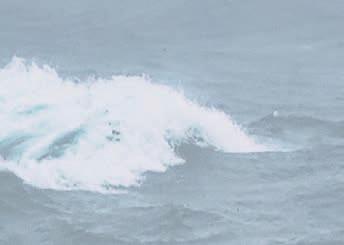






Last of all is Harris in the far reaches of the Outer Hebrides. The distillery in Tarbert opened in 2015 and whilst its single malt whisky has been gently maturing, a very good gin has been making waves. From the start the objective was to incorporate flavours that reflected the unique terroir of the Western Isles, even to the extent of employing an ethno-botanist to find a local, sustainable ingredient that would work as a signature botanical. The answer turned out to be sugar kelp, a seaweed that grows in underwater forests around the island. It’s hand-harvested by a local diver and put in the still to macerate with the other eight more traditional botanicals then removed before actual distillation.

Interestingly all these gins are very different from each other and yes, they each do seem to embody something of their island birthplaces from the lushness of Jura to the blustery seas of Harris.




















































































































































































GIN
SCOTTISH GIN 30 45
Red Door Gin was first introduced in 2018 and is distilled at Benromach Distillery in Forres.








NOSE: It is a classic juniper-led gin, which is what comes through first on the nose – but there’s also bitter orange peel in there.

PALATE: More orange comes through on the palate as well as angelica root and coriander.
FINISH: Long and warming with fresh flavours of juniper and orange.
BARRA
SCOTTISH GIN 35 46








31 43.3














This is distilled at Tobermory on Mull and uses new-make malt spirit in the recipe giving the gin a unique character.


NOSE: The new-make is evident on the nose with a malty quality and there are soft citrus fruit tones in the background.
PALATE: It’s got a great texture with herbal quality, balanced with orange peel and a vanilla sweetness.

FINISH: A great depth of flavour with


the citrus carrying through long into the finish with orange marmalade.
Ahead of creating their own single malt, Barra Distillers have released a range of award-winning spirits including rum and gin.

NOSE: There are 17 botanicals in this gin and the coastal elements are prominent on the nose with the carrageen seaweed.





PALATE: Fresh and clean flavours of lemon, mint and juniper blend well with a touch of aniseed.

FINISH: Long and smooth with soft floral flavours and a touch of spice.
WHISKY AMBASSADOR AT GORDON & MACPHAIL, SOUTH STREET, ELGIN www.gordonandmacphail.com
Based in the company’s spiritual home in Elgin, Fraser has been the Whisky Ambassador at Gordon & MacPhail South Street since 2018. Fraser is also one of the judges of the Scottish Field Whisky Challenge.

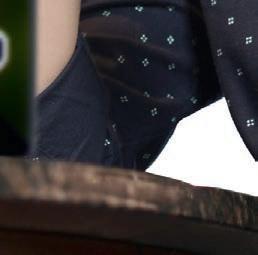




 Written by Brooke Magnanti
Written by Brooke Magnanti



Afine tipple always goes better with a story. This time, it’s not one of mine.

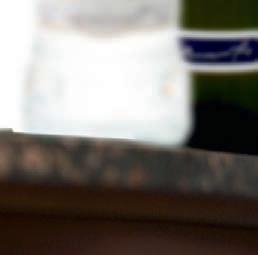


community even though she was kind and cared for sick animals.
even colel’s slander of her)



Long ago there were two beautiful girls born in the Yucatan region of Mexico. One of them Utz-colel, was widely revered for her chastity, even though she was mean and selfish. The other, Xkeban, was freer with her affections and so (due largely to Utzcolel’s slander of her) became an outcast in the

Xkeban grew ill and died following her exile. Her body was found several days later guarded by woodland creatures and covered in a beautiful, fragrant flowering vine. It was then the community realised what harm they had done. The mysterious flower was named Xtabentún in her honour, and its sweet nectar, as appealing to humans as it is to bees and hummingbirds, lent itself to an anise liqueur of the same name.
Like Xkeban, anise spirits and liqueurs are not likely to win everyone’s palate


right away. The dark and complex pleasure of flavours on the liquorice-to-fennel spectrum is too often relegated to a forgotten bottle of Pernod languishing at the back of a drinks cupboard, or an unsuccessful teenage flirtation with the parents’ Jägermeister that brings back stomachchurning memories. And yet this flavour profile remains among the oldest and most persistent in spirit making, with representatives flourishing everywhere from Italy’s Sambuca to Lebanese Arak.
Equally at home with water dribbled over sugar cubes or in a postprandial espresso, it straddles that odd space between the childish palate and the grown-up, as at home in sweet concoctions as it is with a drier finish.
In fact if any physical place was spiritually bound to anise then that is the one, a true crossroads of culture and history. Anise bridges the space between the world of science and the world of mythology. Is it any wonder these spirits are so often anthropomorphised as minor female deities: Xtabentún, La Fée Verte? Star anise finds itself added to protection amulets but what better way to guarantee the favour of the old gods and new than to drink at the sweet font of civilisation itself?
For those whose tastes run to gin and its kind, why not seek out Galician Patxaran, which blends steeped sloe berries with anise. It is also considerably less hardhitting than drinks such as raki and sambuca, at only 25% to their fortysomething. Hangovers: begone!
For those with a robust palate seeking extra indulgence, what about Cristiani Diamante Nero, which combines sambuca with liquorice? What you lose in the louche effect of the spirit turning white, you gain in the rich doubling of complex, sophisticated flavours born to pair (and perfect in the aforementioned espresso).
water hits the drink, turning clear spirits milky
For this panoply of drinks we have the Egyptians to thank. Use of aniseed in liquors comes from there, and then was taken around every nook and cranny in the Mediterranean by the Greeks and Romans. Star anise, native to Asia, is an unrelated plant that contains the same chemical signature of its middle eastern cousin. The pungent oil of both enacts a bit of alchemical magic in the glass when water hits the drink, turning clear spirits milky and fragrant.
This is a flavour that connects the past to the present, memories to dreams, the old world to the new. It is found not only in the Med-adjacent countries but also in Colombian Aguardiente and features heavily in that signature cocktail of New Orleans, the Sazerac – a bewitching combination of delicate, almost floral, Herbsaint, rye whiskey and bitters that tastes as much like a spell-laden potion as any well balanced aperitif.


So what became of the beautiful yet cruel Utz-colel? After her death, her grave was found covered in stinking weeds. Angry at her fate she bargained with gods to make her a woman again. And that woman, the Xtabay, was made a bloodhungry demon that feeds on people lost in the woods at night. It might sound like an extreme punishment for the relatively common sin of pride, but then again, if the opposite is a fine cold glass of pastis? I know which fate I’d rather end up with.
A LOOK


Made in Marseille, this French favourite is made with Chinese star anise, Provencal herbs, fennel, oriental liquorice and African kola nut.
Made using traditional botanicals along with bramble leaves and heather for a Scottish twist.

Made in the Yucatan, delve deeper into the tragic tale of Xkeban with this liqueur made from Xtabentún flower, honey and rum.
‘This avour pro le remains the oldest in spirit making’
Edinburgh was once hailed as the brewing capital of the country, yet more and more of its breweries are now producing non-alcoholic beers. Ever curious, the Cask & Still team went to investigate...
Written by Peter Ranscombe



Ihave a new-found respect for Thor. When the Norse god of thunder was forced to swap his legendary hammer for a spindly axe during the Avengers films, I was left pondering ‘How hard can it be to wield an axe?’
The answer? Very, as I found out as my axes bounced off the boards, walls and even cages at Black Axe Throwing in Edinburgh, while my Cask & Still colleagues effortlessly landed shot after shot after shot on target. In an attempt to drown my sorrows following my
crushing defeat, I headed for Black Axe’s bar. While Thor may have gone in search of an ale or a mead or a bottle of the Innis & Gunn Original that he enjoyed in Avengers: Endgame, I was in search of something a wee bit lighter.
That’s because Black Axe’s Edinburgh venue boasts the largest designated alcohol-free bar in Britain. More than 40 beers line the shelves of its fridges, with cans and bottles from throughout the UK and further afield jostling for position, while kegs of BrewDog’s Punk AF India pale ale (IPA) and Lost AF lager feed taps on the bar.
‘It almost happened overnight,’ laughs Tom McMinn, the manager at the venue, which began life as a pop-up back in 2018 before opening in its current warehouse home at Beaverhall in spring 2022. ‘We reached out to as many breweries as we could find that made nonalcoholic beer and asked them to send us samples, with a promise we’d buy more to restock once they ran out.
‘About 42 or 43 got back to us and sent us beers, and so we became the biggest bar in the UK. We’re now expanding into ready-to-drink cans and alcohol-free wines.’



Its alcohol-free bar in Edinburgh has been so successful that it’s now getting its own brand – ‘The Open Arms’ – which will be rolled out to its other sites. The company already has venues in Belfast, Lancaster, Margate, and Southampton.
Among the ‘local legends’ celebrated on Black Axe’s blackboards

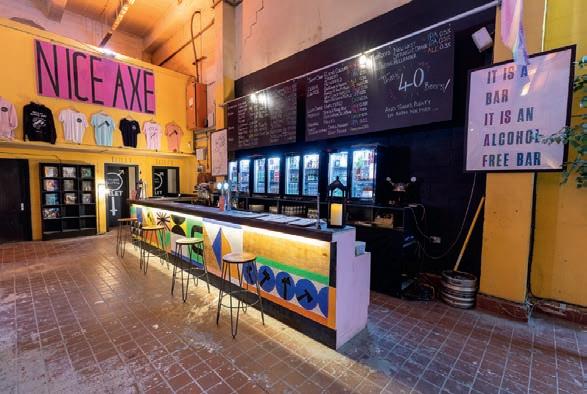



are Brulo, Days and Jump Ship, which have been in the vanguard of Edinburgh’s new wave of alcohol-free beer brands. For Jump Ship, that success is now leading to the construction of its own brewery.









Craft beer fan Sonja Mitchell launched Jump Ship in 2019 after being unable to find an alcohol-free beer that she wanted to drink. ‘I was being forced to choose German-style lagers, which weren’t what I wanted, and so I decided to have a go at making my own,’ explains Mitchell, who drew on her experience helping to market other food and drink start-up companies.
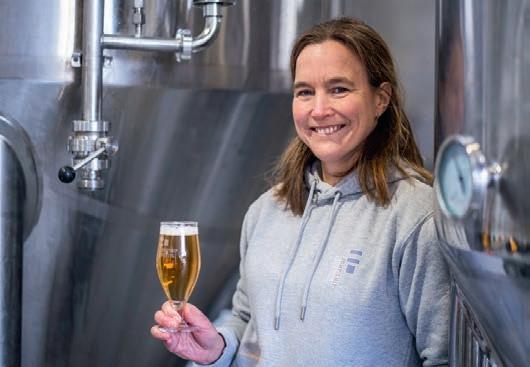

Now, she’s moving into her own site at Rosemain Steadings just outside Pathhead in Midlothian. Jump Ship raised £400,000 from just over 300 investors during a crowdfunding campaign earlier this year, smashing through its £280,000 target within just 48 hours.



‘Edinburgh has such a thriving craft beer scene – I was inspired to make a non-alcoholic beer that could match the quality of the alcoholic beers being produced locally,’ Mitchell says. ‘We’ve got brilliant venues, great restaurants, and some of the world’s best bars are here – people come from around the world to spend time in Edinburgh and so it’s a great city to showcase what we’re doing.’


Being unable to find an alcoholfree beer they enjoyed was also the motivation for Mike Gemmell and Duncan Keith, who launched Days Brewing in 2020, having returned from London to their native Edinburgh ahead of the first coronavirus lockdown. They combined their experience of working for brewing behemoth AnheuserBusch InBev and gluten-free bread maker Genius Foods to create a brand that’s now stocked by Tesco and Wagamama.
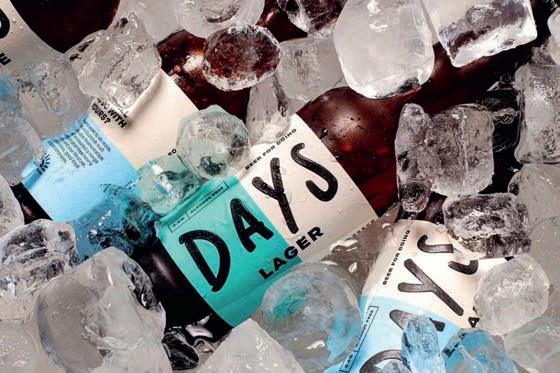
They brew Days’ lager and pale ale under contract at Haddington in East Lothian and trumpet their use of soft water from the Lammermuir Hills. ‘Softer Scottish water is really good for brewing beer, particularly the way we do, because it means we can retain all the flavours,’ says Gemmell, who made one of his first on-trade sales by taking samples to chef Tom Kitchin’s Scran & Scallie gastropub in Edinburgh’s Stockbridge district.
‘There’s been a huge change in how consumers view alcohol-free beers,’ he adds. ‘Part of that is driven by people wanting to live a healthier lifestyle, but also the quality is really good now – to my mind, we have three of the best alcohol-free beer brands in the UK right here in Scotland.’








Taste is also a focus for Brulo beer brand founder James Brown, who makes his brews in Belgium, England and Scotland. ‘For me a great tasting beer without the alcohol is literally the perfect beer that could ever exist –it can be enjoyed anytime, anywhere,’ he says.
‘I’ve had the pleasure of working alongside some of the best breweries in the world over the past ten years. During that time, the craft beer revolution changed beer for the better, but nothing really happened when it came to alcohol-free beer options – it wasn’t really shown

‘Softer Scottish water is really good for brewing beer’






3 ISSUES FOR ONLY £11.50
JUNE 2023 £4.95


Special focus on Borders and Dumfries & Galloway







Subscribe to Scottish Field today and enjoy the very best interiors, antiques, gardens, wildlife, motoring and country news alongside entertaining and informative writing. With this special offer you’ll save over 20% off the shop plus receive a free welcome gift and get free delivery of each monthly issue. SUBSCRIBE NOW AND DON’T MISS OUT

• SAVE over 20% on the shop price








• FREE welcome gift worth over £30

• ENTERTAINING and authoritative writing from Scotland’s finest writers

• GUARANTEED lowest price direct from the publisher
• FREE home delivery straight to your door
• NEVER miss an issue of your favourite magazine
IT’S EASY TO SUBSCRIBE…
the attention, innovation and creativity that it deserved, and I wanted to change that.
‘Depending on the beers we want to create, we choose the partner that best suits those needs. We would love to build our own brewery in the future as the market continues to develop.’





In the past, Edinburgh’s mix of softer waters for lager and harder waters for IPA birthed a battalion of breweries in the city, exporting their wares throughout the empire. Even after the Old Town’s coal fires diminished, the smell of brewing beer meant the capital retained its nickname as ‘Auld Reekie’.
Today, Edinburgh’s beer brands continue to turn heads further afield. Brulo, Days and Jump Ship each won prizes at this year’s inaugural

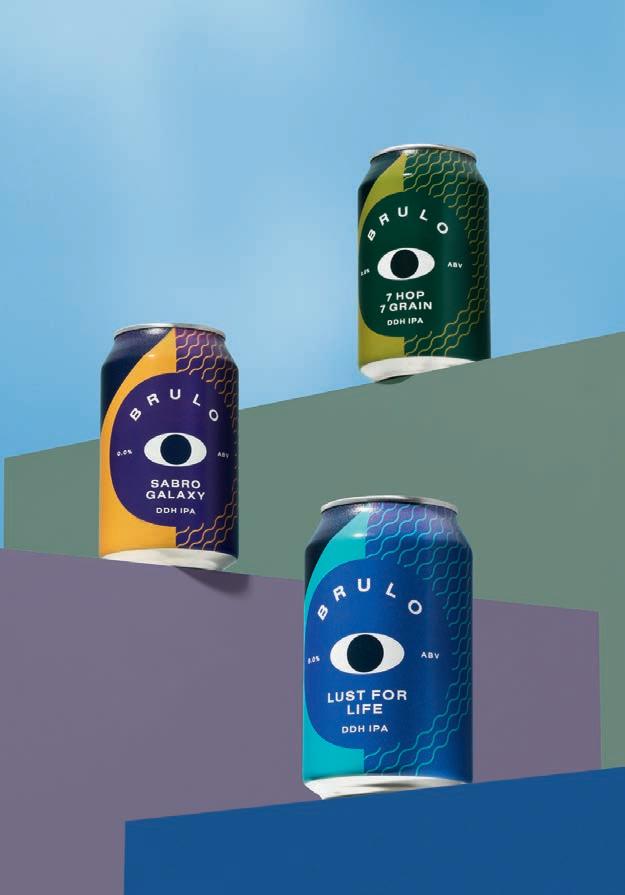
World Alcohol Free Awards.

‘The overall standard in the beer category was strikingly high – it was one of the strongest categories at the awards,’ explains Chris Losh, the awards’ director. ‘And, although the drinks were all tasted blind at the judging stage, it was great to see Scottish beers doing noticeably well once the bags came off.
‘The awards attracted a mixture of breweries that had been set up specifically to make alcohol-free beer and also craft breweries that had added a non-alcoholic beer to their range. I think the next step in the development of alcohol-free beer will be for a wider range of styles to be brewed.
‘Most alcohol-free breweries already make lighter styles – like pale ales and lagers – but I think we’ll see a wider range in years to come. Our judges were excited to already see beers such as Brulo’s Five Fruit Gose and Big Drop’s Galactic Milk Stout at this year’s awards and this is such a creative space I’m sure we’ll see more atypical beer styles like this in years to come.’

‘most alcohol-free breweries make lighter styles but we’ll soon see a wider range’




SCOTTISH BEER
7.40 (330ml bottle
The famous Plain Dark Beer, laid to rest in ex-Bonnington 1969 whisky casks, with some aged in an ex-rye cask blended in.
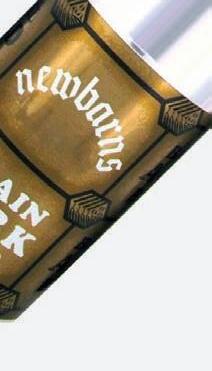
Up front, it smells like walking into the barrel store of a distillery with lots of oak, coconut, molasses, sweet cherry, vanilla and baker’s chocolate, with none of the alcohol heat.
PALATE: A lot more of the base beer comes through, with some dark fruits, morello cherry, prunes, malted loaf, cacao nib, tobacco leaf and a little bit of liquorice.
FINISH: Expect a long, rich finish, like that of a good quality dark chocolate, lending some drying bitterness to balance out the sweetness, and keep everything in check. There is, as you might expect, a slight bit of booze from the barrels, not in an overpowering way, but helping to cut through the thick mouthful of the beer.


BELGIAN BEER
5 (375ml bottle) 7
allowing Chimay Blue to undergo a secondary fermentation in barrels (a different type each

NOSE: Banana, pear brandy, violet, elderflower.
PALATE: Coconut, vanilla, oak, caramel, chocolate.





FINISH: Initial sweetness counterbalanced by the alcohol, allowing the more confected notes to linger.











A blend of 90% 18-month-old lambic, 5% robustly charactered 3-year-old lambic, and 5% fresh lambic. This blend of oak-matured spontaneously fermented ales combines to create a deliciously complex sparkling beer.

NOSE: Notes of grapefruit and ginger, a vinous character.


PALATE: Vanilla, cloves, oak, phenols reminiscent of whisky.
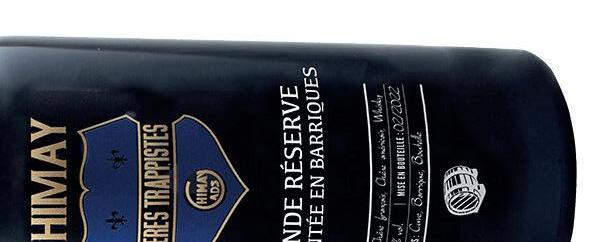

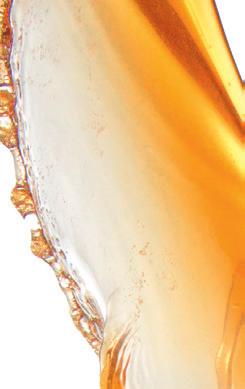

FINISH: Zesty, sparkling, full bodied and sublime.


COMMUNICATIONS AND BUSINESS DEVELOPMENT MANAGER FOR JAMES CLAY AND SONS























www.jamesclay.co.uk
Joe takes care of communicating about a portfolio of breweries imported to the UK and can usually be found running around the world trying to find the newest and best thing to be brought to our market.

The old hauf n hauf is a time honoured tradition, and at production level beer and whisky are more or less first cousins. Perhaps it’s time for a more interdisciplinary approach. While each has trodden their own path, there’s a lot of transferable knowledge to share.
A large part of modern ‘craft’ beer’s identity is tied to independent ownership, supporting the little guy and flying in the face of big corporations. While it’s no secret that the vast majority of Scotch whisky distilleries are owned by larger companies or groups, it’s impossible to argue this has had a negative effect on overall quality of the spirit produced. If anything, it has been essential to global marketing.
But corporate ownership is seen as enormously damaging within the craft beer market, with a smaller number of acquisitions ending up aggressively driving down the price and killing off competition. The cynical lesson to learn is to collectively roll over, give in to big business, and wait for the profit to roll in. But perhaps there’s an argument for whisky distilleries to turn back towards independence to focus on individual character and innovation.
The ‘craft’ beer industry is going through another confusing growth spurt
causing friction between purists, and those who want to disengage their brain while having a beer. The flavour cycle is favouring beers that don’t taste like beer again, with many breweries cranking out beers filled with additional flavourings. Of course, SWA regulations actively prohibit anything like this happening with Scotch whisky, but it feels that the opportunity is there for any distillery brave enough to capitalise on this market and push flavour boundaries to the edge of what’s currently permissible.
There’s also the opportunity for whisky and beer to influence each other by incorporating one into the other. While grogging beer directly with a spirit is illegal, it’s a common practice to age whisky in seasoned casks. SWA regulations allow for whisky to be aged in ex-beer casks, even particularly flavoursome ones such as ex-imperial stout barrels. Moving past the regulations though, what if whisky could explore techniques like those used in Belgian beers that are aged in large foeders?
We’re really only in the infancy of brewing and distilling being taught as joint disciplines, and there’s plenty more than the above to swap notes on between the two. There’s a bright future ahead if we talk about it together. Cheers.
‘We’re in the infancy of brewing and distilling being taught as joint disciplines’
Beer and whisky may be poles apart in flavour, but they have much more in common than you might imagine





In Brazil everybody drinks beer, but I never liked it. So, in my early twenties I started looking for something else. At first I turned to vodka and cachaça (which is distilled from fermented sugarcane juice and is very popular in Brazil) but eventually I came across whisky. My first sips were of Jack Daniels, Chivas and Black Label. When going out with my friends, everybody would order their beer but I would order a whisky on the rocks.
Apart from a couple of popular whiskies, it was very difficult to find less well-known drams at bars. I started going to supermarkets, looking for more interesting bottles. I remember trying Famous Grouse for the first time in my best friend’s house, and I really enjoyed it.

Because I’m a bit of a geek, I started to study whisky. I wanted to try all the whiskies in the world. I never had the mind of a collector… more that of a Pokemon Trainer, chasing all the bottles that I could find in Brazil! Then one day I decided to create an Instagram page Jornada Do Whisky [which translates as Whisky Journey]. The idea was to share, step by step, how a whisky novice can become a sommelier.
I am relatively new to the whisky industry, but there are others who have been talking about whisky on their channels for years like Whisky Brazil on Youtube or Mauricio Porto, who owns the Caledonia Bar in Sao Paulo and who – under O Cão Engarrafado – was one of the first to talk about whisky online from Brazil. So, I followed them and learned with them.
Brazil does not have a mature whisky culture yet, but we are the fourth biggest importer of Scotch in the world. This is mostly because we have such a big population that, as soon as one brand becomes popular, demand grows very quickly.
























We have some whisky distilleries in Brazil. One is Lamas, which is family run. They produce in small batches and have a variety of casks, but you won’t be able to find their whisky in a supermarket as they mainly sell from the distillery shop and online. Then there is Union Distillery who have good peated whiskies and are one of the best in Brazil. But again, there is not a strong internal market so they have to sell abroad.
In Brazil many still view whisky as a drink for old men with a cigar and a moustache, sitting in a leather chair. Basically a villain or a very rich person! Whisky is expensive. There is a big gap between the richest and the poorest, and Brazil’s middle class tends to be priced out of whisky. Currently there are no big events or festivals in Brazil – the demand is not there yet and it’s very risky to invest in whisky at the moment, even opening a whisky bar is really difficult.
More and more whisky novices are asking which dram they should try. I’d really like to see Brazil in the top three for whisky consumption, and I hope the work we do here will help.



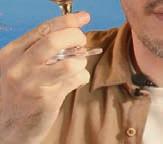













WS:01 is the first Blended Scotch Whisky to leave the Scottish Borders since 1837, and the first expression of the Workshop Series from the Borders Distillery. Each bottle is individually numbered, and only 5,988 will ever be released for sale in the UK.

